PAGE
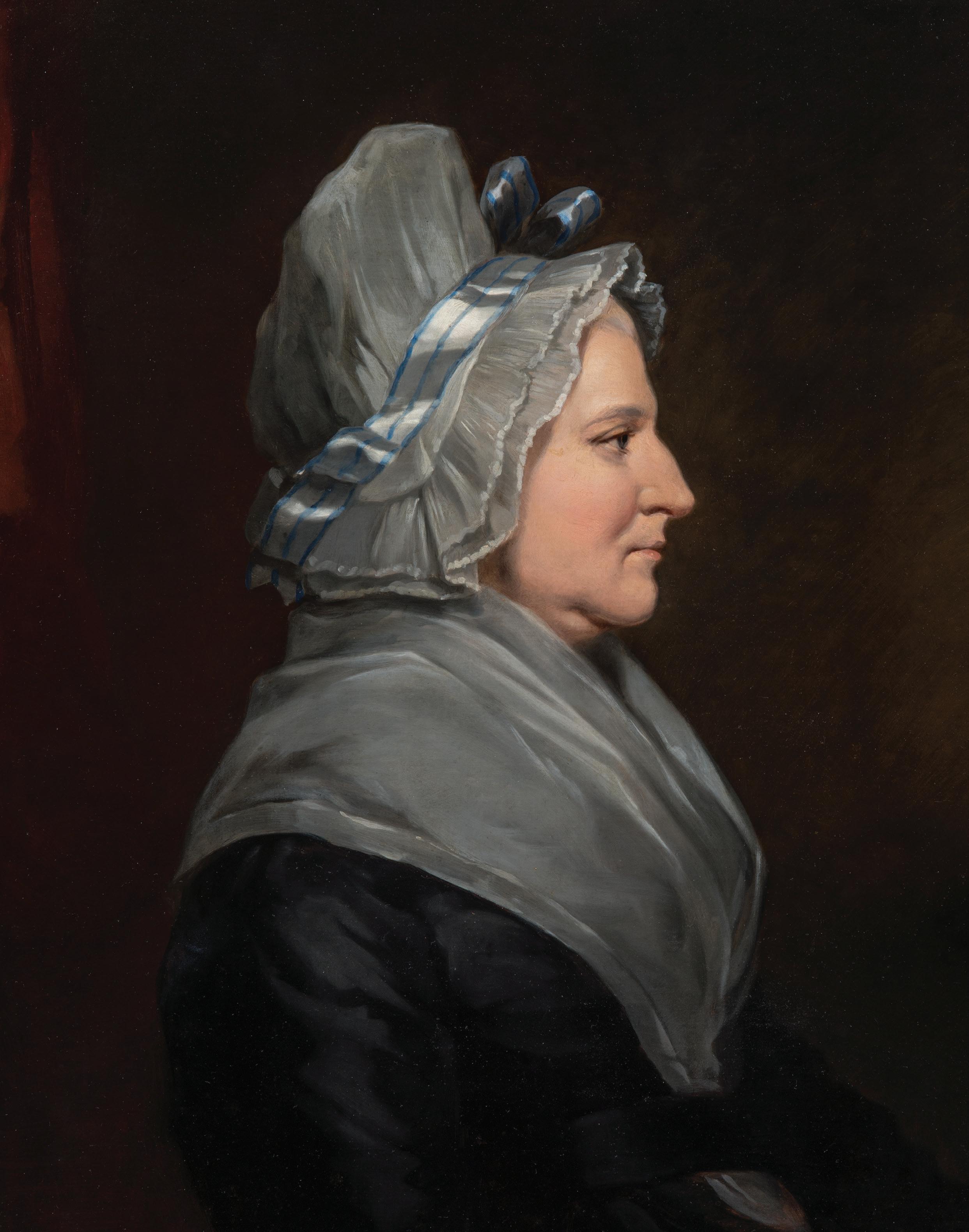
PAGE

MOUNTVERNON.ORG H SPRING 2023 COLLECTIONS A STORY TOLD IN STITCHES
28 RESEARCH TAKING CARE OF BUSINESS
14 BOOK IN HER OWN WORDS
PAGE
22
sp ecial H All about Martha Washington— businesswoman, artist, public figure, and more GEORGE WASHINGTON’S
First Lady
MARK YOUR CALENDAR
NEW AND UPCOMING
GREAT REASONS TO VISIT MOUNT VERNON
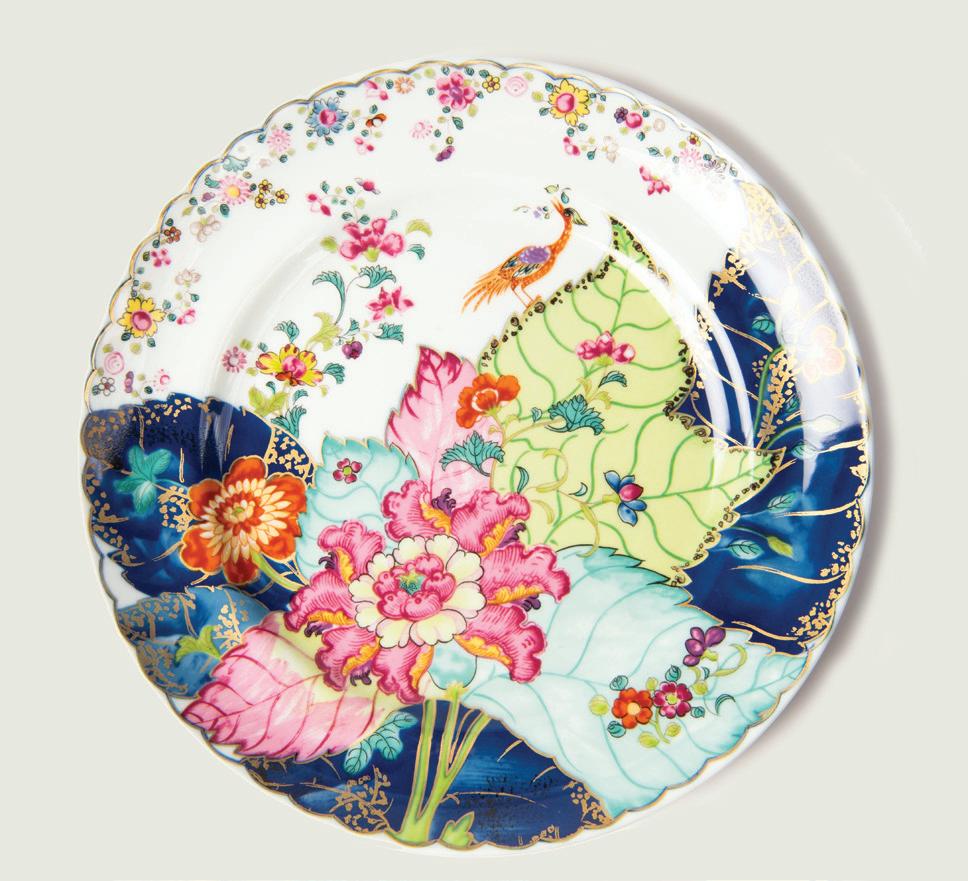
SPRINGTIME GIFTS AT THE SHOPS
The spring collection has arrived at Mount Vernon’s newly renovated gift shop. Come see the collection in person, or shop online at mountvernon.org/shops.
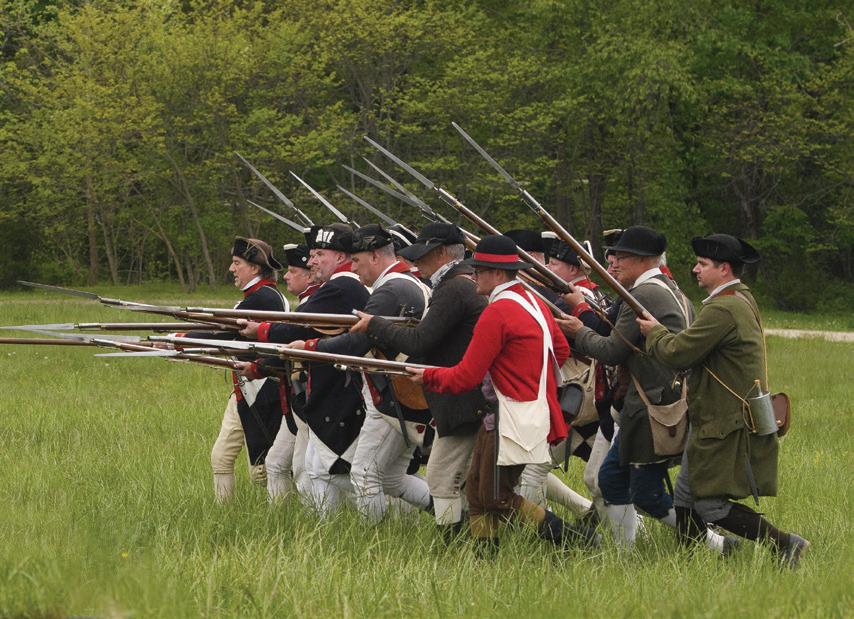
REV0LUTIONARY WAR WEEKEND
Join us May 6–7 for Revolutionary War Weekend. Step back in time with battle reenactments, witness military drills, and meet “General Washington.” Learn more at mountvernon.org/revwarweekend.

CONSULTING EDITOR:
Norie Quintos
DESIGNER : Jerry Sealy
PRODUCTION MANAGER: Matt Briney
VISUAL RESOURCES: Dawn Bonner
CONTRIBUTING WRITERS:
Julie Almacy
Matt Briney
Amanda Isaac
Margaret Loftus
Jessie MacLeod
Dean Norton
Kristen Otto
Jeremy Ray
CONTRIBUTING PHOTOGRAPHERS:
Dan Chung
James B. Hicks III
Kaitlyn Prange
Caroline Spurry
Clarissa Villondo
Mount Vernon magazine is published three times a year by the Mount Vernon Ladies’ Association, the nonprofit organization that owns and manages George Washington’s estate. We envision an America where all know and value the singular story of the father of our country. Ever mindful of our past, we seek innovative and compelling ways to tell the story of George Washington, so that his timeless and relevant life lessons are accessible to the world.
This publication is produced solely for nonprofit, educational purposes, and every reasonable effort is made to provide accurate and appropriate attribution for all elements, including historical images in the public domain. All written material, unless otherwise stated, is the copyright of the Mount Vernon Ladies’ Association. While vetted for accuracy, the feature articles included in this magazine reflect the research and interpretation of the contributing authors and historians.
George Washington’s Mount Vernon P.O. Box 110, Mount Vernon, Virginia 22121
All editorial, reprint, or circulation correspondence should be directed to magazine@mountvernon.org.
ABOUT THE COVER
This profile portrait of Martha Washington was inspired by an original pastel by James Sharples, the renowned British pastellist, for whom George Washington sat at least once.
This work was probably produced in the mid-19th century, most likely using Sharples copies. Perhaps reflecting later tastes, the artist who produced the oil simplified the original background, darkened the palette, and enlarged the image.
Circa 1840–1882, MVLA

GEORGE WASHINGTON’S MOUNTVERNON.ORG H SPRING 2023
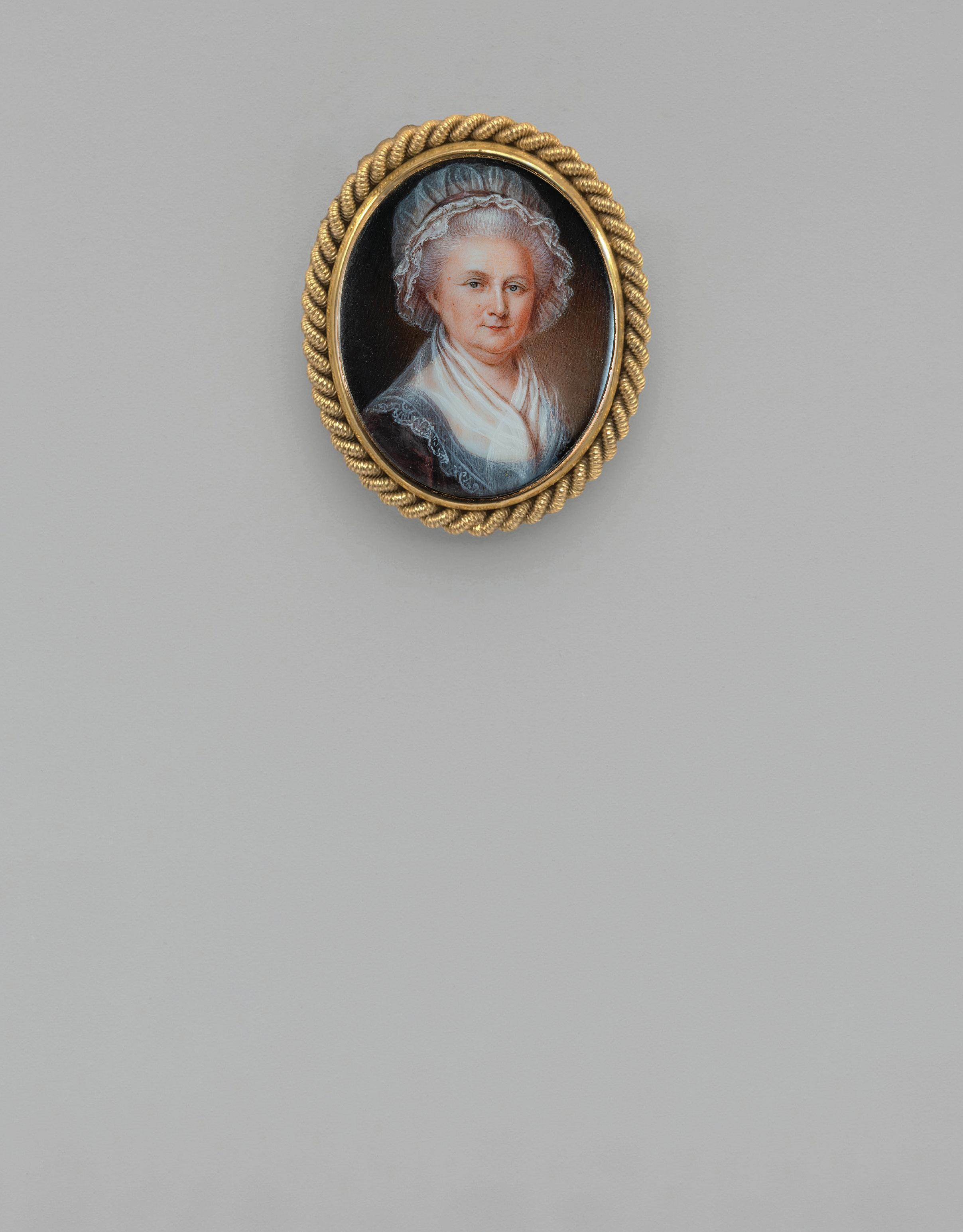
First Lady
14 | A Woman in Charge
Taking care of business: Despite the constraints of the time, Martha Washington took charge as a widow and wielded enormous influence as a wife
By Bruce A. Ragsdale
22 | Post Script
Though Martha destroyed her correspondence with George, her writings to and from others have been collected and compiled into a new publication Plus: Eight things to know about Mrs. Washington
By Kathryn Gehred
28 | Artist at Heart
A window into Mrs. Washington’s creative side, as seen through her lifelong passion for needlework
By Amanda Isaac
MARTHA WASHINGTON, JAMES PEALE, 1782, THE METROPOLITAN MUSEUM OF ART
FEATURES
A miniature portrait of Martha Washington, by James Peale.
4 | News
A new Martha debut, leadership conference in Spain, preservation update, baking heritage grains, and more
10 | Object Spotlight
The story behind an exquisite gold snuff box given to Martha by her first husband, Daniel Parke Custis
12
|
Focus on Philanthropy
Major Reynolds, president of the Richard S. Reynolds Foundation, on the importance of learning history
36 |
Research at Mount Vernon
As society changed, the public’s perception of Martha Washington changed along with it
38 |
Washington in the Classroom
A schoolteacher in Havre, Montana, shares insights on teaching third graders
40 |
Shows of Support
A record-breaking Spirit of Mount Vernon event, and preserving Washington’s Tomb
44 | Featured Photo
Martha’s fruity, spicy, buttery, and boozy Great Cake

George Washington’s Mount Vernon estate is owned and maintained in trust for the people of the United States by the Mount Vernon Ladies’ Association of the Union, a private, nonprofit 501(c)(3) organization founded in 1853 by Ann Pamela Cunningham.
MOUNT VERNON LADIES’ ASSOCIATION
Margaret Hartman Nichols, Regent
Andrea Notman Sahin, Secretary
Anne Neal Petri, Treasurer
VICE REGENTS
Cameron Kock Mayer, Louisiana
Maribeth Armstrong Borthwick, California
Ann Haunschild Bookout, Texas
Virginia Dawson Lane, South Carolina
Laura Peebles Rutherford, Alabama
Susan Marshall Townsend, Delaware
Anne Neal Petri, Wisconsin
Liz Rollins Mauran, Rhode Island
Ann Cady Scott, Missouri
Sarah Miller Coulson, Pennsylvania
Andrea Notman Sahin, Massachusetts
Catherine Hamilton Mayton, Arkansas
Helen Herboth Laughery, Wyoming
Catherine Marlette Waddell, Illinois
Lucia Bosqui Henderson, Virginia
Mary Lang Bishop, Oregon
Elizabeth Medlin Hale, Georgia
Ann Sherrill Pyne, New York
Karen McCabe Kirby, New Jersey
Hilary Carter West, District of Columbia
Adrian MacLean Jay, Tennessee
Sarah Seaman Alijani, Colorado
SENIOR STAFF
Douglas Bradburn, President & CEO
Joe Bondi, Senior Vice President, Development
Matt Briney, Vice President, Media & Communications
Phil Manno, Chief Financial Officer
Susan P. Schoelwer, Executive Director, Historic Preservation & Collections & Robert H. Smith Senior Curator
Joseph Sliger, Vice President, Operations & Maintenance
K. Allison Wickens, Vice President, Education
SPRING 2023 | MOUNT VERNON LADIES’ ASSOCIATION 2 DEPARTMENTS
George Washington could not have asked for a better partner in life. The first “First Lady,” Martha Washington was a remarkable woman for her time. She was a widow skillfully running one of the largest plantations in Virginia by the time she married Colonel Washington and moved to Mount Vernon. (Daniel Parke Custis, her first husband, died after seven years of marriage, just a few months after the death of their daughter, Frances.)
Martha was well known for her hospitality, and Mount Vernon was always a hive of activity, welcoming guests from around the colonies. It’s her standard of hospitality that established the precedents of entertaining for later American presidents. She determined the protocols, and shaped the social life, of the unique office of the Presidency. In a political world dominated by men, she was often the only woman at the table. Guests ranged from members of Congress, cabinet members, foreign ambassadors, governors, businessmen, and even on occasion, Native American tribal leaders.
Perhaps her lesser-known but most honorable contribution to public life was her service during the war. Mrs. Washington spent half of the war alongside her husband, in camp or nearby. She helped copy her husband’s letters, knitted items for the soldiers, visited hospitals, and led a group of women who helped fundraise for clothing and supplies for the soldiers. Washington’s officers often looked forward to her visits, knowing she would soften the General’s rigorous discipline. Her wartime sacrifice was far from typical of most women of her status and upbringing. It was well noticed and boosted the morale of the troops and their commanding officer.
There is much to learn about Martha Washington, and we are delighted to dedicate this issue to her life. Last year, with the support of the Mount Vernon Ladies’ Association and our generous supporters, we published the definitive collection of Martha Washington’s surviving

papers. In this issue, editor Kathryn Gehred, who worked extensively on the papers, surfaces stories revealed by the correspondence. Washington Prize winner Bruce Ragsdale places Martha Washington in her moment, and examines how the widow became one of the most influential women of her time. And Mount Vernon’s associate curator Amanda Isaac explores the style and artistry of Martha Washington, as revealed in our extraordinary collection of her needlework.
The next time you visit us at Mount Vernon—and I hope to see you this year—do not forget to reflect on Martha Washington’s role in helping to establish our great Republic.
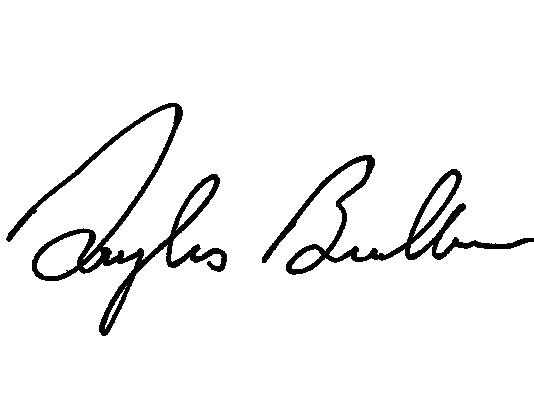 Douglas Bradburn President and CEO
Douglas Bradburn President and CEO
GEORGE WASHINGTON’S MOUNT VERNON 3
From the President
Changing Roles
An appreciation of Mary Wiseman, as she retires and Elizabeth Keaney takes the reins as “Martha Washington”
For the last 18 years, since 2004, guests visiting Mount Vernon have been greeted warmly by “Martha Washington,” as interpreted by Mary Wiseman.
Wiseman came to Mount Vernon after a storied career at Colonial Williamsburg, where she researched, developed, and performed several historical personas, even coining the term “character interpretation.” She challenged staff to possess detailed knowledge of the period and characters they were portraying and bring the characters to life through conversation and dialogue. And Wiseman did precisely that at Mount Vernon, using her charm, grace, and expertise to transport guests to another place and time.
At Mount Vernon, Wiseman was known for captivating guests with stories of Martha Washington’s life. She was a fixture at events, where she embodied Martha Washington’s spirit of hospitality. She was also influential
in developing Mount Vernon’s programming around Martha Washington and regularly appeared in film and television productions. Wiseman’s influence cannot be quantified, and the voluminous praise she has garnered through the years demonstrates her impact on countless visitors.
In early 2020, Mary expressed her intention to retire from her role. She suggested Elizabeth Keaney as her replacement, who had portrayed various characters, including Martha, at Mount Vernon for several years. For the last two years, Keaney has studied under Wiseman’s guidance. They explored the collections and examined Martha Washington’s personal effects, and they often traveled to events together, with Wiseman sharing her knowledge along the way. It’s a dream come true for Keaney, a Missouri native, who now considers Mount Vernon to be her new home.
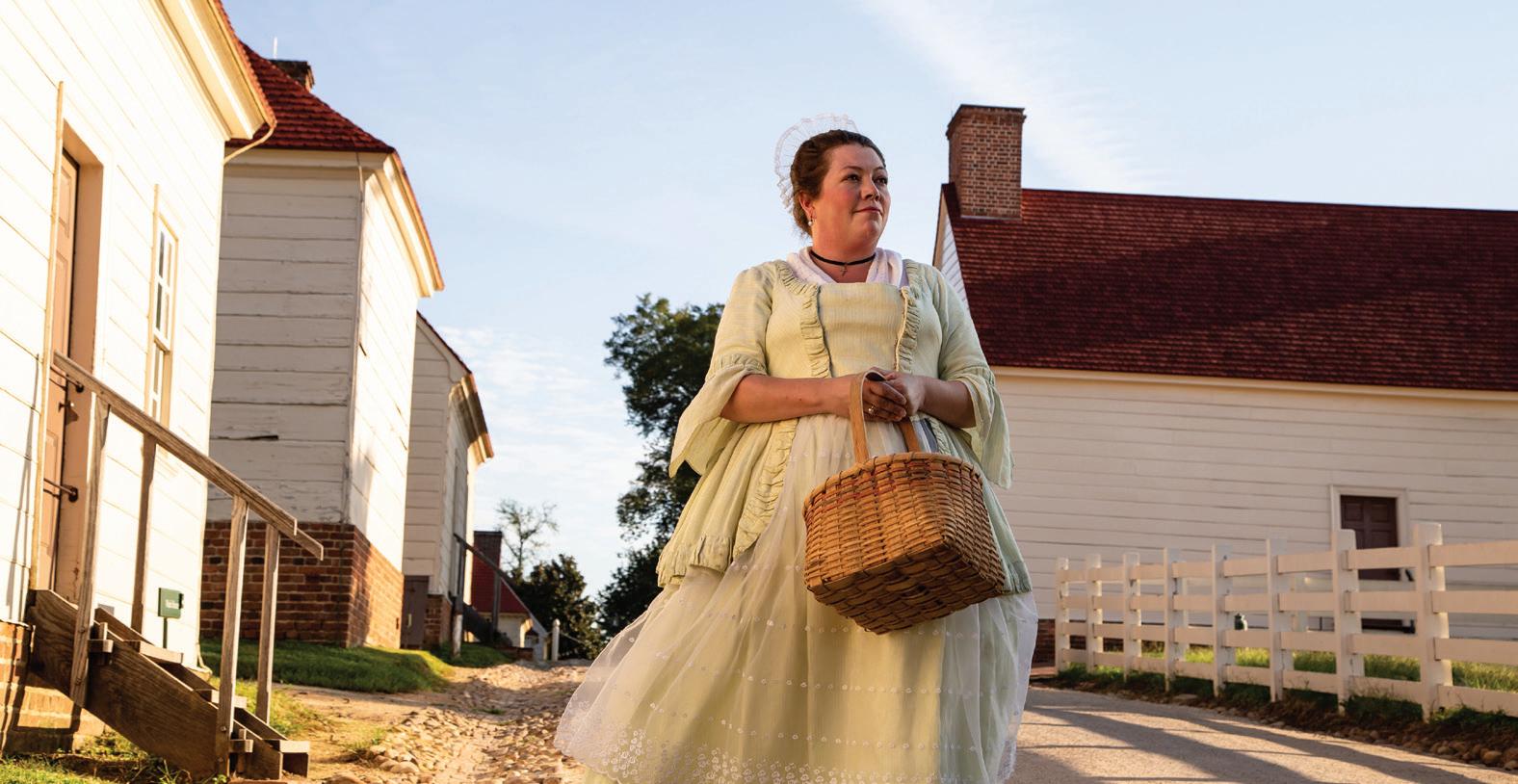

4 SPRING 2023 | MOUNT VERNON LADIES’ ASSOCIATION Mount Vernon News
After 18 years interpreting the persona of Martha Washington, Mary Wiseman (right) with her trademark welcoming smile, hands over the reins to Elizabeth Keaney (above), seen on a morning stroll.

Size Matters
Ongoing study explores a new dimension of Martha Washington
What was Martha’s clothing size? It’s not simply an exercise in curiosity. Mount Vernon’s remarkable collections include the largest known group of garments belonging to George and Martha Washington. More than just illustrations of what they wore, these artifacts are rich sources of data on the human nature of the Washingtons, and the individuals, enslaved and free, who shaped the leading couple’s personas.
Mount Vernon’s Kathrin Breitt Brown, historical costumer, and Amanda Isaac, associate curator, have embarked on a project to discover Martha Washington’s height and figure, by systematically measuring and examining her surviving clothing and accessories. Specific period descriptions of Mrs. Washington’s size do not survive, and today’s perceptions of her are clouded by romantic portrayals that tend to diminish her physically. When the study concludes, it will offer a more accurate look at this Virginia woman, one of the nation’s founding mothers.
This project follows a similar one from 2005 and 2006, when a comprehensive study of George Washington’s clothing enabled researchers to define his height and figure, leading to the creation of lifelike figures in the Education Center that offered guests a compelling view of Washington at different stages of his life.

WASHINGTON’S
VERNON 5
MVLA. ALL PHOTOS: MVLA
GEORGE
MOUNT
BROWN SILK GOWN:
Martha Washington favored this silk gown, and may have worn it while her husband was president.
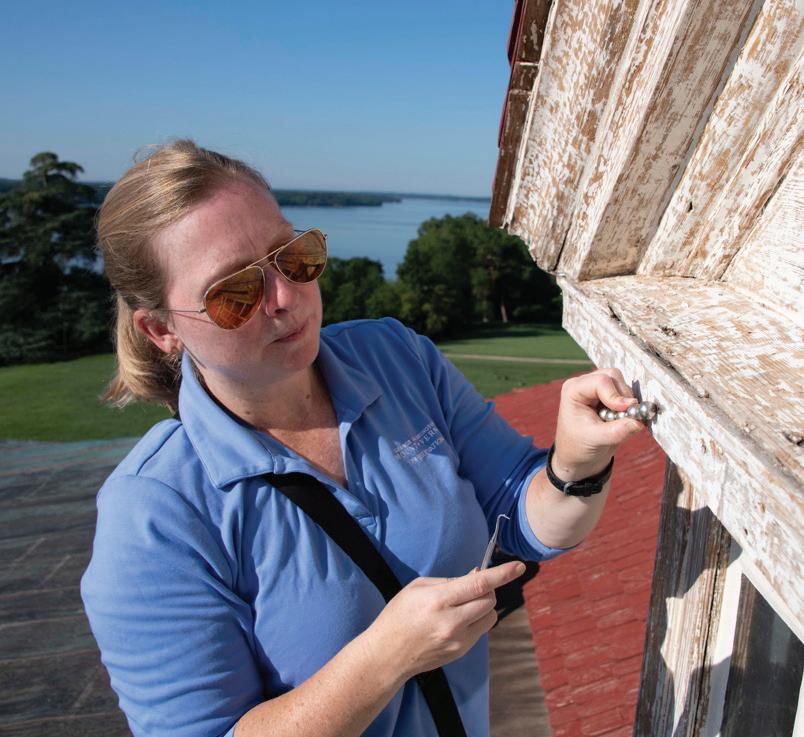
Work in Progress
Mansion prepares for a major infrastructure upgrade
During Washington’s time, Mount Vernon was a work in progress, with additions, room renovations, and new outbuildings constructed, and gardens and landscapes created. “I have scarcely a room to put a friend into, or to set in myself, without the Music of hammers, or the odoriferous smell of Paint,” wrote Washington to James McHenry in 1797.
It’s the same today, though much of the work falls to Mount Vernon’s historic preservation team. Visitors will begin to see more of this work in action as Mount Vernon readies for the nation’s 250th birthday in 2026.
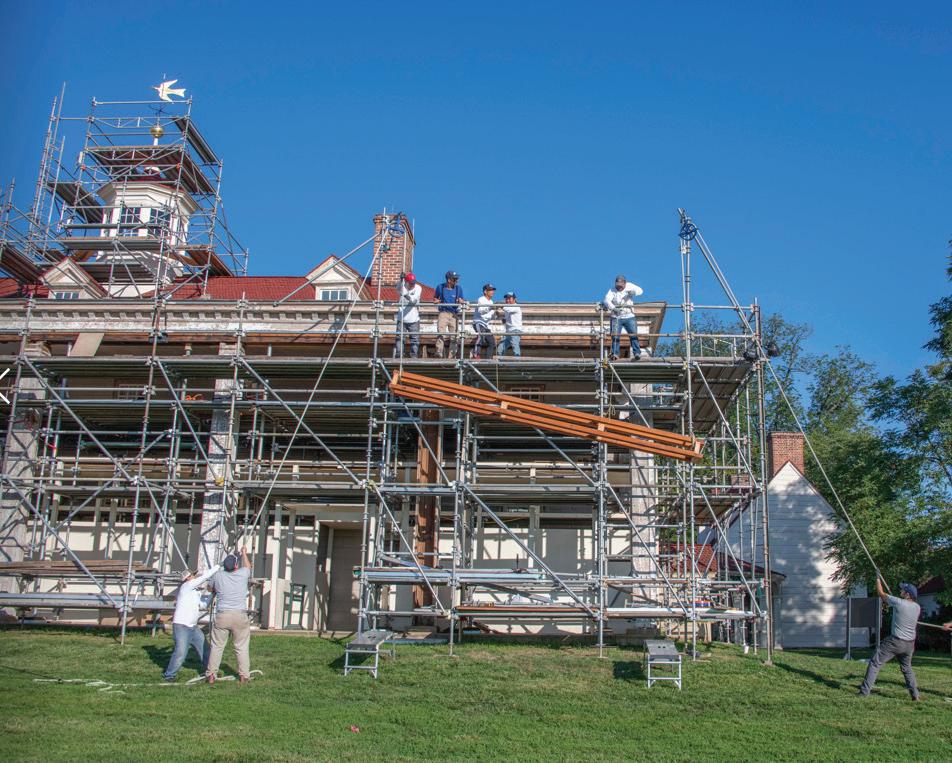
Renewal of the building’s exterior comes to a close this April and with it the removal of the scaffolding. Starting in late 2023 and continuing through 2025, the Mansion will undergo a major infrastructure upgrade. Intrusive HVAC systems and dated electrical conduits will be re-routed beneath the house and plumbed into a new multizone system through the existing chimneys. These upgrades will provide greater opportunities for interpretation in the cellar and better access to the original foundation of the more than 300-year-old structure.
The archaeology team has completed initial work on the north side of the Mansion to document and preserve cultural features when the existing mechanical bunker is expanded this spring.
Mount Vernon’s curators are also working on plans to continue restorations of the downstairs bedchamber, the Washington bedchamber, and Washington’s study. These rooms will be updated, just as others have been in the Mansion, based on the latest and scientific evidence.
In addition to the Mansion, the historic preservation team will continue restoring the estate’s outbuildings. Visitors today can see work being done to restore George Washington’s smokehouse, enabled with support from Edwards Virginia Smokehouse.
As Mount Vernon’s preservation team pulls back the layers of these buildings in the coming years, guests have a unique opportunity to view hidden elements of the estate that will only be exposed once in a generation.
6 SPRING 2023 | MOUNT VERNON LADIES’ ASSOCIATION Mount Vernon News
Staff and crew hard at work on the Mansion’s exteriors (above left and above).
From Grains to Grits
Noted chefs work with Mount Vernon’s heritage grains
Since the restoration of the Oliver Evans automated water-powered milling system (the only one left of its kind) at George Washington’s Gristmill, the estate has been producing corn and wheat products for use at the Mount Vernon Inn Restaurant. Over the past several years, two renowned chefs have taken Mount Vernon’s milled products to new heights.
Chef and resident baker Justin Cherry extensively studied foodways at Mount Vernon during his fellowship at the Washington Library. He has been pivotal in bringing white lamas grains— which Washington cited as the best export grain—back to Mount Vernon. He even built a historically accurate 18th-century clay oven to take on the road. Visitors to Mount Vernon can find Cherry baking bread for sale at Mount Vernon’s public events and throughout the year on the Washington Farm.
Mount Vernon has also partnered with area restaurants. Head miller Cory Welshans and lead trades interpreter Tyler

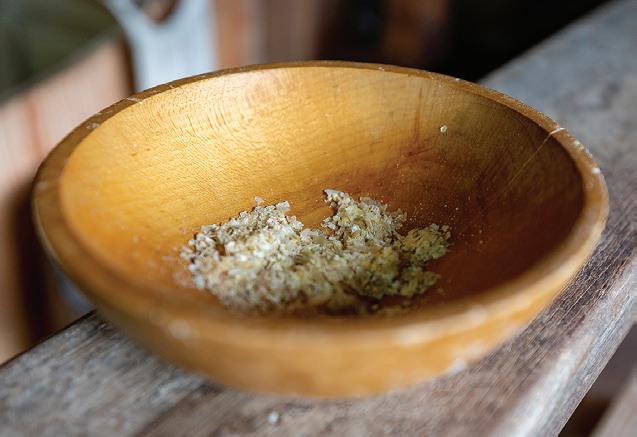

Smith grind cornmeal and grits for chef David Guas of Bayou Bakery in Arlington, Virginia, as part of a years’ long relationship. Guas captures the traditional and organic elements used by Washington in dishes such as cornbread, lemon chess pie, cornmeal sable cookies, and shrimp and grits.
Mount Vernon’s grain products


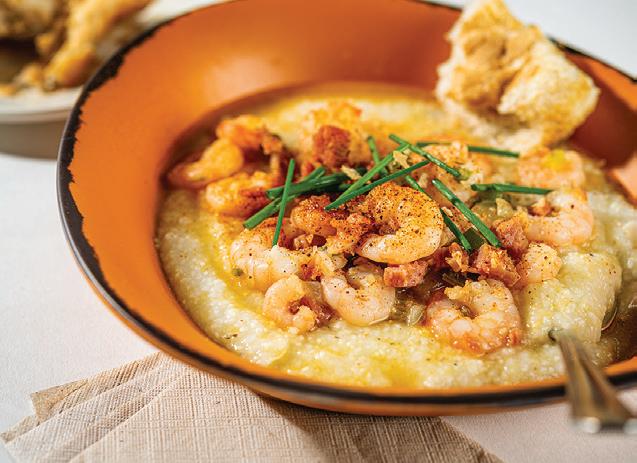
can also be found on the menu at Alexandria’s River Bend Bistro, situated on Washington’s original lands. Home bakers can purchase stone-ground grits, pancake flour, and yellow cornmeal at the Shops at Mount Vernon.
GEORGE WASHINGTON’S MOUNT VERNON 7 RESTORATION WORK: PHOTOS MVLA. GRITS AND DAVID GUAS: PHOTOS COURTESY BAYOU BAKERY. JUSTIN CHERRY, GRINDSTONE, BOWL, AND WHEAT: PHOTOS
MVLA
The gristmill (above) produces artisanal products from heritage grains (left and below). Chefs Justin Cherry (top left) and David Guas (below left) use them, such as in Bayou Bakery’s shrimp and grits (bottom).
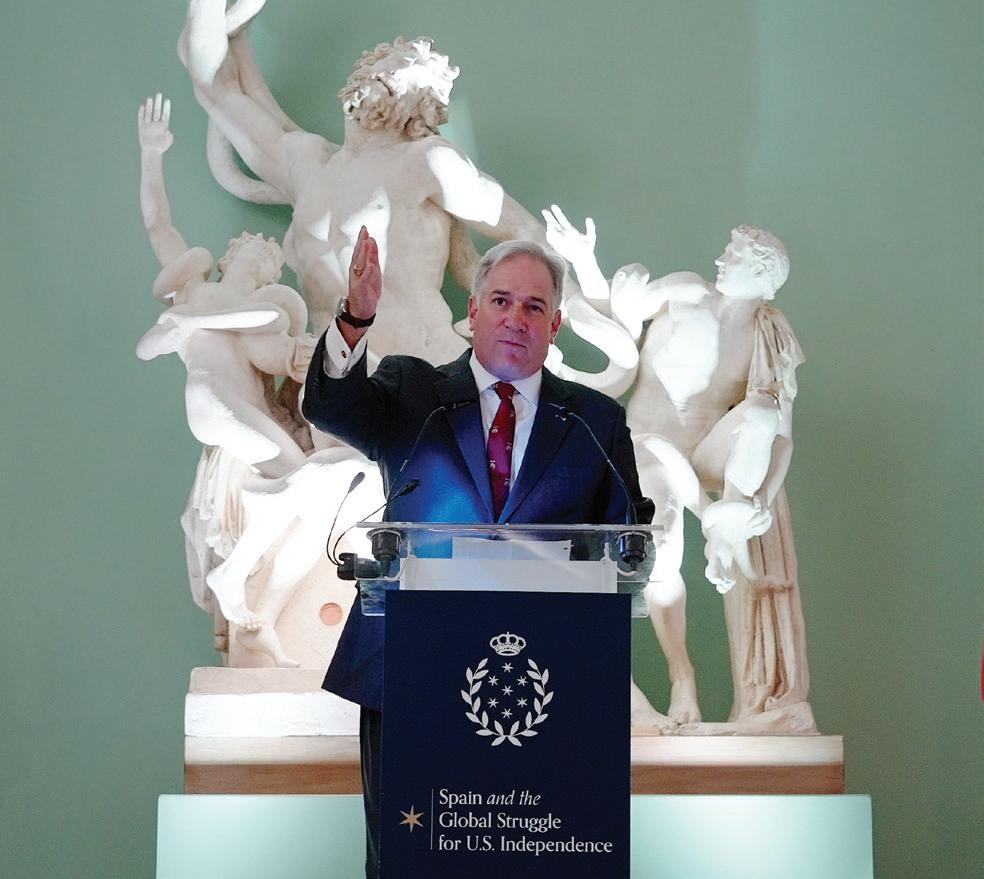

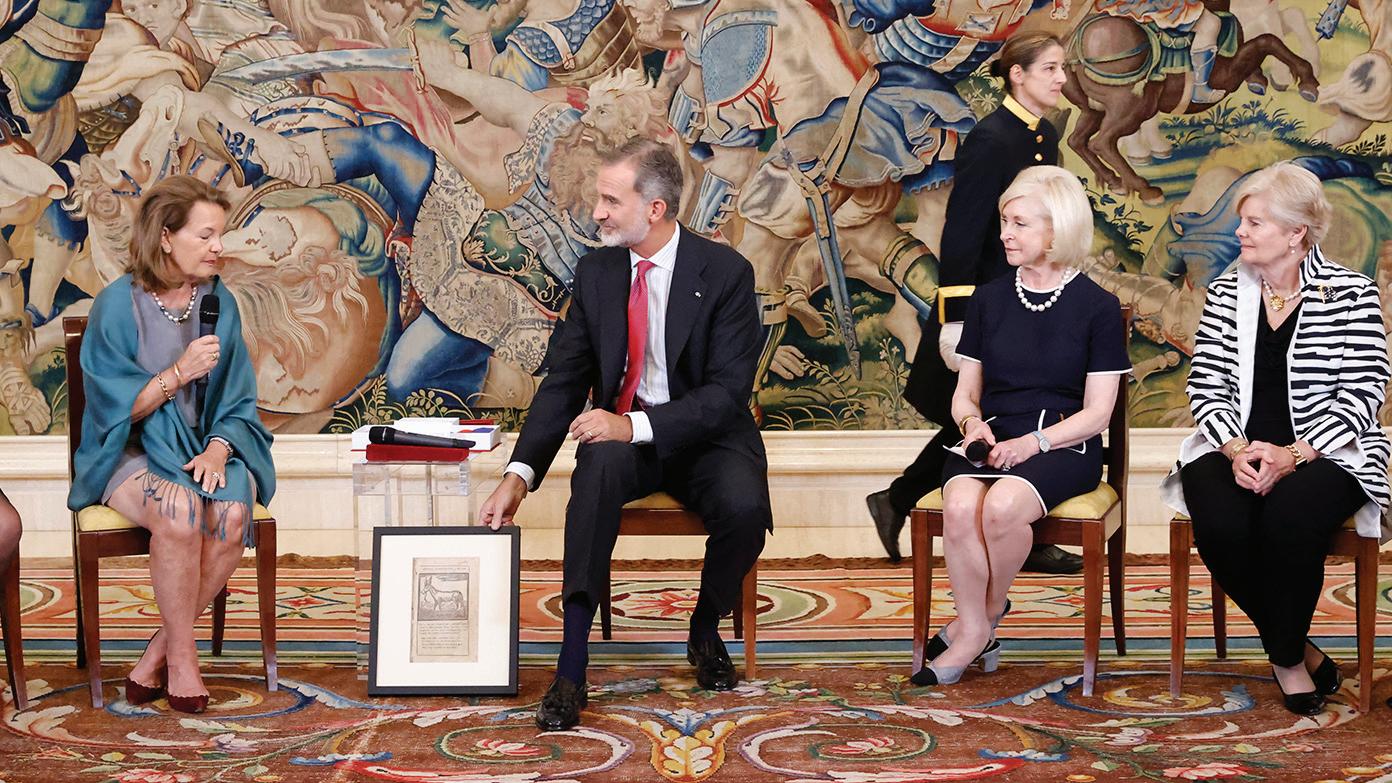

Spanish Immersion
George Washington Presidential Library hosts its third international conference
More than 80 donors, scholars, and special guests gathered in Madrid in September 2022 for a two-day conference featuring leading historians, academics, policymakers, and cultural professionals from both sides of the Atlantic who shed light on the largely unknown history of Spain’s support during the American Revolution and the early years of the new United States. The conference and a related forthcoming publication are part of the Washington Library’s mission to promote, encourage, and support new research about the founding of the
United States. The event was sponsored by Iberdrola, Fundación Consejo España-EE.UU., and Drs. Robert Highsmith and Sarah Fogg.
Fifty guests remained an additional five days to tour with the Mount Vernon Travel Program, further exploring the cuisine, art, architecture, history, and cultural ties between the U.S. and Spain. Trip highlights included a reception hosted by the U.S. ambassador, and a private audience with His Majesty King Felipe VI. The Mount Vernon Travel Program is a benefit available to Mount Vernon donors of $10,000 or more.
8 SPRING 2023 | MOUNT VERNON LADIES’ ASSOCIATION Mount Vernon News
Spain highlights include (clockwise from left) opening remarks by Mount Vernon's Douglas Bradburn; guests strolling the courtyard at El Escorial; remarks by Julissa Reynosso Pantaleón, US ambassador to Spain; and a private visit with His Majesty King Felipe VI of Spain.
Notebook
Teacher resource: On October 22 and 23, the George Washington Teacher Institute hosted a free digital symposium for kindergarten through 12th-grade teachers.
“Teaching Martha Washington and the Women of the 18th Century” explored the lives of 18th-century women of all backgrounds and the impact of their contributions to the founding of the United States. New wheels on the farm: Donated funds enabled the purchase of a new 14-passenger, horse-drawn wagon. A lighter cart for the horses to pull, it also provides a better experience for guests. Next-gen voices: Eight high school members of Mount Vernon’s first Student Advisory Board came together last September to begin their year-long terms. The group will work with staff and experts to help shape education and programming at Mount Vernon.
BY THE NUMBERS

13,837 Number of Mount Vernon members, as of January 2023. Members receive many benefits such as free admission.


90,000
Approximate number of stitches required to make just one of Martha’s shell cushions; she made 12. [See story, page 32.]
7 Number of years the annual Patriot Run—a 10-mile and five-kilometer race up and down the scenic George Washington Memorial Parkway—has been run.

FIELD NOTES
Washington fenced off 18 acres on the slope between the Mansion and the Potomac River to serve as “a paddock for deer.” He’d already secured six fawns from Benjamin Ogle of Bel Air, Maryland.
By the early 1790s, the fencing around the deer park had fallen into disrepair. The deer had escaped and were drawing complaints from the gardeners. Eventually, the area became overrun with vines, trees, and the occasional wild deer.
The horticulture team is now working to restore the meadow, eradicating invasive plants, removing dead trees, and pruning existing trees in favor of selected overstory hardwoods and native shrubs and ground covers.
As for the deer?


Learn more at mount vernon.org/deer.
GEORGE WASHINGTON’S MOUNT VERNON 9 FOLLOW MOUNT VERNON ON YOUR FAVORITE SOCIAL MEDIA FOR THE LATEST ESTATE NEWS. FACEBOOK.COM/HISTORICMOUNTVERNON TWITTER.COM/MOUNTVERNON INSTAGRAM.COM/MOUNT_VERNON YOUTUBE.COM/HISTORICMOUNTVERNON
ALL PHOTOS: MVLA
Presidential cheer at the Patriot Run.
Stimulating Gift
Martha received a gold snuff box from her first husband
FIRST LADY
In 1753, Daniel Parke Custis ordered an exquisite luxury from London for his wife. This tiny gold snuff box, measuring less than an inch high and a mere two inches wide, would have fit neatly in the palm of a delicate hand, making a stunning accessory for a woman in the upper echelons of colonial society. The box features a lid of polished agate, a semiprecious stone, and its gold sides are chased with exuberant rococo flowers and scrolls.
Inhaling powdered tobacco was a fashionable and eminently social habit in the 18th century. When taking snuff, the box itself became a point of pride, as the user exhibited it and offered a pinch of its contents to each member of the assembled company. Both men and women enjoyed sniffing the stimulant, and like Queen Charlotte (English King George III’s wife), Martha Custis Washington preferred a scented blend known as Violet Strasburg. Martha treasured the box throughout her life, passing it and the habit to her granddaughter Eliza Parke Custis Law.
The little gold box may have been Martha’s introduction to snuff, or the encouragement of a practice she had already developed. It also served as a potent symbol of the family’s wealth and status. Engraved on the base of the box is the Parke family coat of arms: an eagle displayed in a diamond (the shape used by women, rather than a shield).
The item has an interesting side story: It is the earliest surviving object showing Daniel Parke Custis’s adoption of the Parke coat of arms as his own, supplanting the Custis emblem. As one of several potential heirs to the contested Parke estate, Custis’s decision to mark his material goods this way asserted his claim and anticipated its resolution in his favor. Thereafter, all his heirs would use the Parke eagle to distinguish their worldly goods.

SPRING 2023 | MOUNT VERNON LADIES’ ASSOCIATION 10 Object Spotlight
Treasure box: The snuff container features a rococo design, a lid of polished agate, and an engraved base.
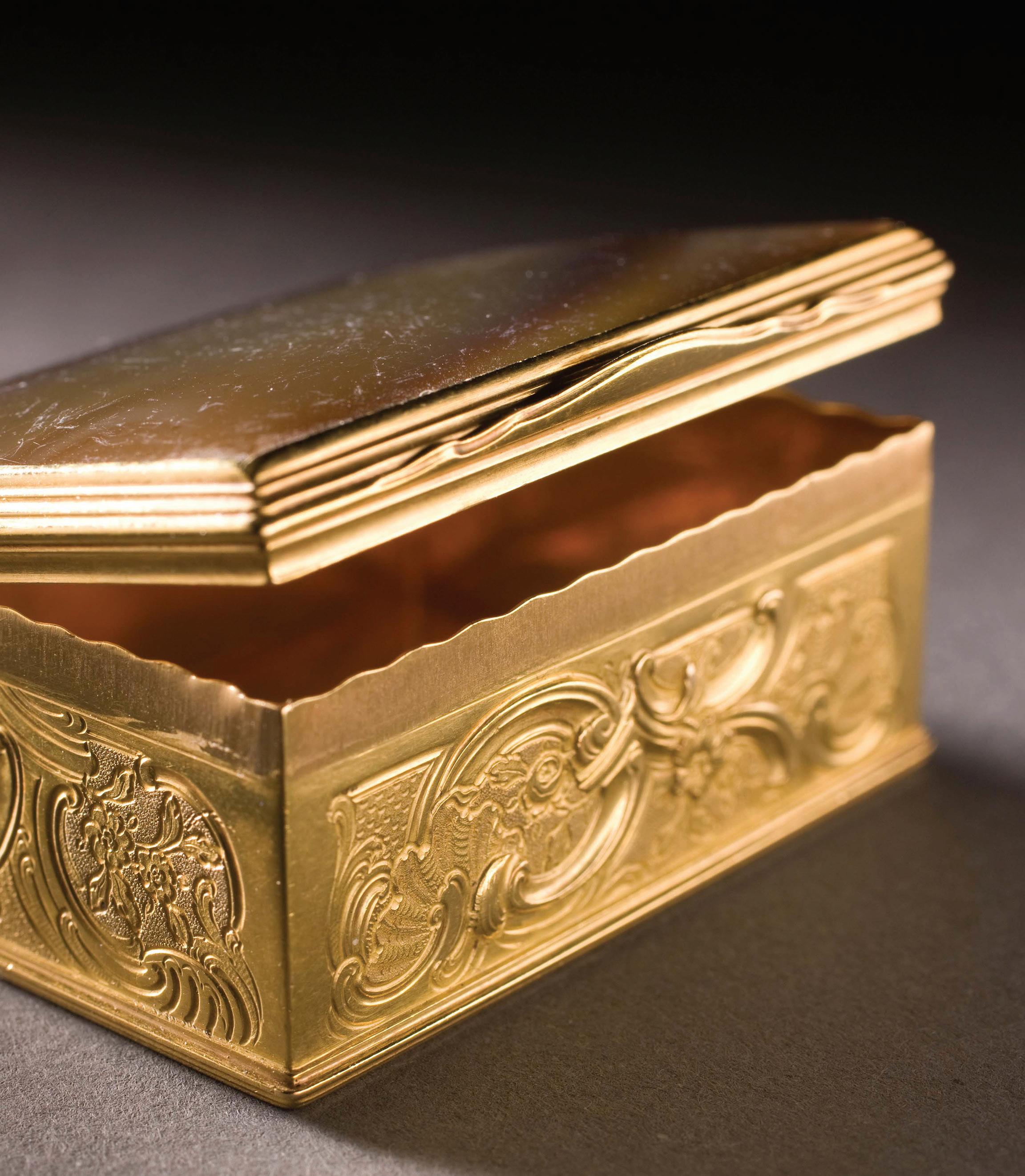
GEORGE WASHINGTON’S MOUNT VERNON 11 MVLA

Supporting history and Washington’s legacy of leadership is vital, says Major Reynolds, president of the Richard S. Reynolds Foundation
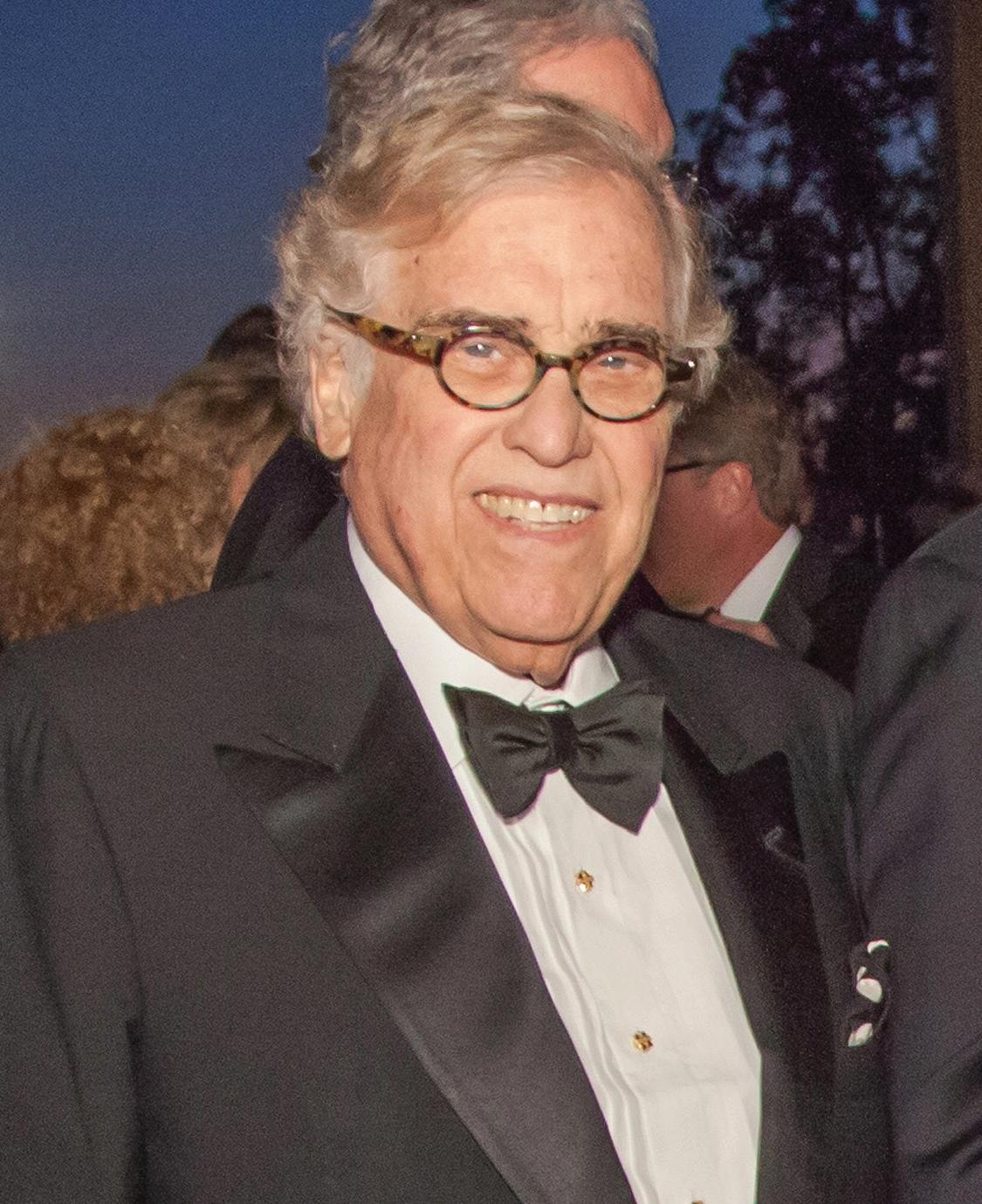
historical novels—C. S. Forester and Kenneth Roberts were favorite authors—and he continues to be a voracious reader of history texts today. “I remember what Harry Truman said: ‘The only thing new under
the sun is the history you don’t know.’” Understanding the past gives us context for current events, he notes. “If you see a problem in the news, it always has roots in what people have done to each other in the past. It sticks with the culture.”
It’s a lesson driven home by the example of George Washington, whom he came to revere as an undergraduate history major at Princeton University. “He was from
12 SPRING 2023 | MOUNT VERNON LADIES’ ASSOCIATION Focus on Philanthropy
BY
PHOTOS
FOSTER WILEY
Virginia, so of course I had a natural interest in him,” says Reynolds, who was born and bred in the Old Dominion State and lives in Richmond with his wife, Pamela. But it was more than an affinity. “Washington was the one indispensable person in the founding of the country. Without him, none of the rest of it comes into play.”
Such abiding veneration for the first president ultimately inspired a total of nearly $1 million in gifts to Mount Vernon from the Richard S. Reynolds Foundation of Richmond, Virginia, of which Major Reynolds is president. The other trustees, Dorothy R. Brotherton, Glenn R. Martin, and Randolph N. Reynolds were supportive of the gifts. The family foundation first became involved with Mount Vernon in 1999, donating $500,000 to the To Keep Him First campaign, which supported the creation of the Ford Orientation Center and the Donald W. Reynolds Museum and Education Center (to whom there is no relation).
Reynolds believes the work of Mount Vernon is more critical than ever given the current state of politics. “George Washington had absolute support within this country and could have remained in power for as long as he wanted. He chose to surrender that power. He did it purposefully to establish a peaceful transfer of power, which, in most of the world, was unknown at the time,” he explains. “That set the pattern.”
It was Pamela who suggested to Major that the Reynolds Foundation could support programming related to Martha Washington. Pamela’s philanthropic community involvement includes service as the president of the Virginia Museum of Fine Arts during its recent expansion and as an emeritus trustee of Monticello’s Thomas Jefferson Foundation. She has served on many other arts boards.
The Reynolds Foundation’s support has included a gift of $200,000 to endow the Martha Washington Lecture Series as part of the Campaign for the Library. The foundation also donated $100,000 to sponsor the publication of the Papers of Martha Washington and
The Reynolds Foundation has supported the endowment of the Martha Washington Lecture Series as part of the Campaign for the Library, the publication of the Papers of Martha Washington, and the acquisition of original items.
$135,000 to help acquire the Peter Family Collection, which was the most significant single privately owned assemblage of items—from housewares to jewelry— owned by George and Martha Washington from a direct descendant of one of Martha’s grandchildren, and its interpretation in the museum exhibit Mount Vernon: The Story of an American Icon
“We thought [it] was extremely important to acquire those original items,” says Reynolds. Again, it all goes back to context. “I think it’s important to know about Martha Washington—who she was, and from where she came— so [visitors] realize how important she was to George. She was very much an influence in his life,” he says. “We thought that Martha deserved some attention herself.”
THERE
TO
CALL 703-799-8647 OR EMAIL SUPPORT@MOUNTVERNON.ORG.
GEORGE WASHINGTON’S MOUNT VERNON 13
ARE MANY WAYS TO SUPPORT MOUNT VERNON.
LEARN
HOW,

A Woman
Martha Washington and the business of a Virginia plantation
By bruce a. ragsdale
THE WEST FRONT OF MOUNT VERNON, EDWARD SAVAGE, CIRCA 1787–1792, MVLA
FIRST LADY 14 SPRING 2023 | MOUNT VERNON LADIES’ ASSOCIATION

in Charge
15 GEORGE WASHINGTON’S MOUNT VERNON
Martha, George, and granddaughter Nelly at Mount Vernon, in a painting by Edward Savage.
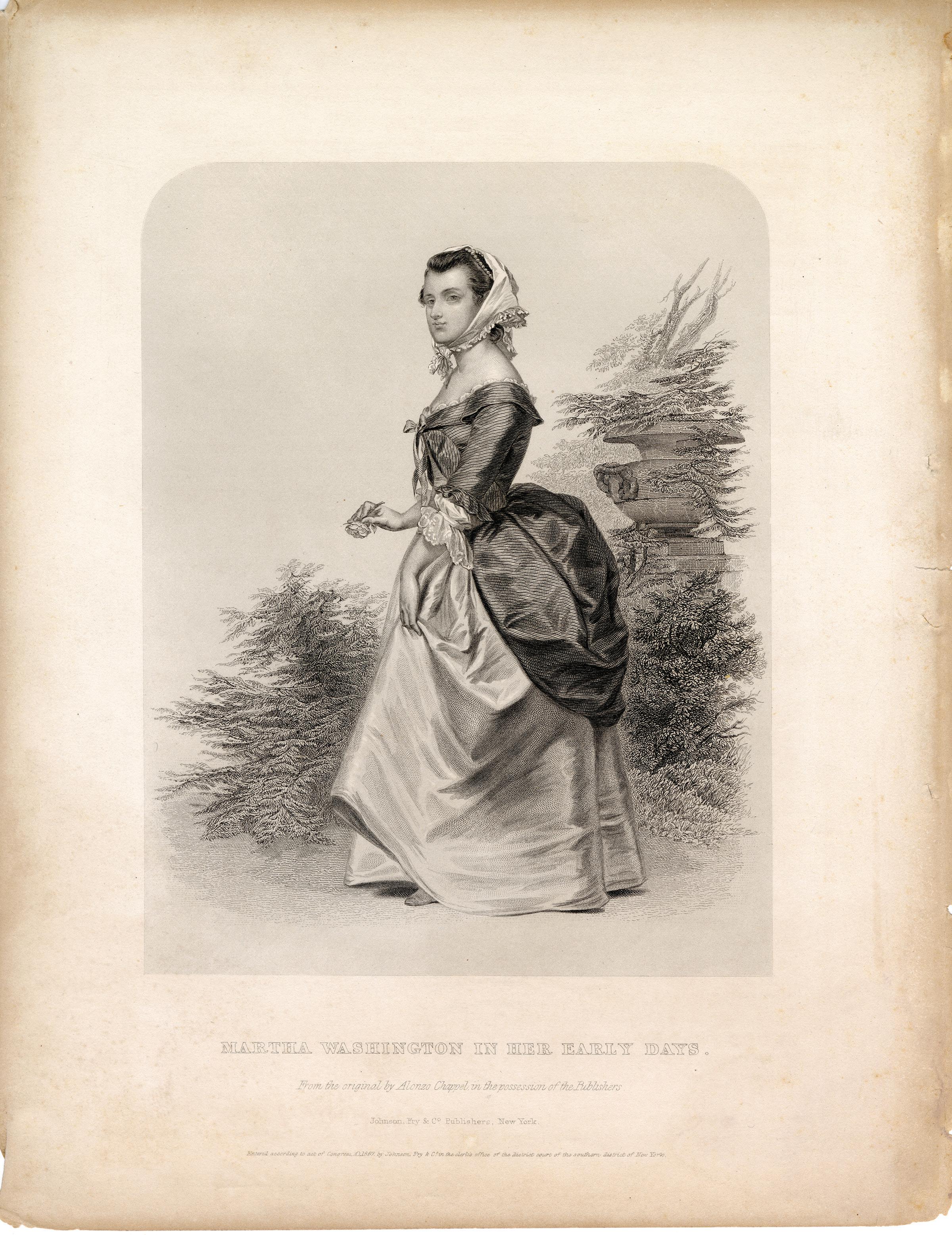
the wife of the commander of the continental Army, and later, the president, Martha Washington was celebrated for her hospitality, but she also played a mostly forgotten role in the management of a large plantation that relied primarily on the labor of enslaved Black people. At Mount Vernon, alongside her husband and especially during George’s frequent and lengthy absences, Martha was involved in the daily operations of the estate. She did so in spite of laws and customs that sharply limited the independent business decisions of women. In her understanding of the varied operations of the estate and in their shared conversations about farming, trade, and the work of enslaved laborers, Martha was a behind-the-scenes partner to George in the running of a Virginia plantation.

By the time Martha Dandridge Custis married George Washington in January 1759, she already knew something about the wide-ranging business of a large estate. Her first husband, Daniel Parke Custis, had died without a will, effectively leaving the young widow in charge of one of colonial Virginia’s wealthiest estates, which controlled the lives of nearly 290 enslaved persons who labored across more than 17,000 acres. Virginia laws, following the custom of English common law, denied married women almost all rights to control property. The same set of laws, however, granted widows enormous influence over property, including land and enslaved persons. And so it was that in 1757 Martha became the administrator of the Custis estate and its varied business interests, much as George Washington’s mother, Mary Ball Washington,
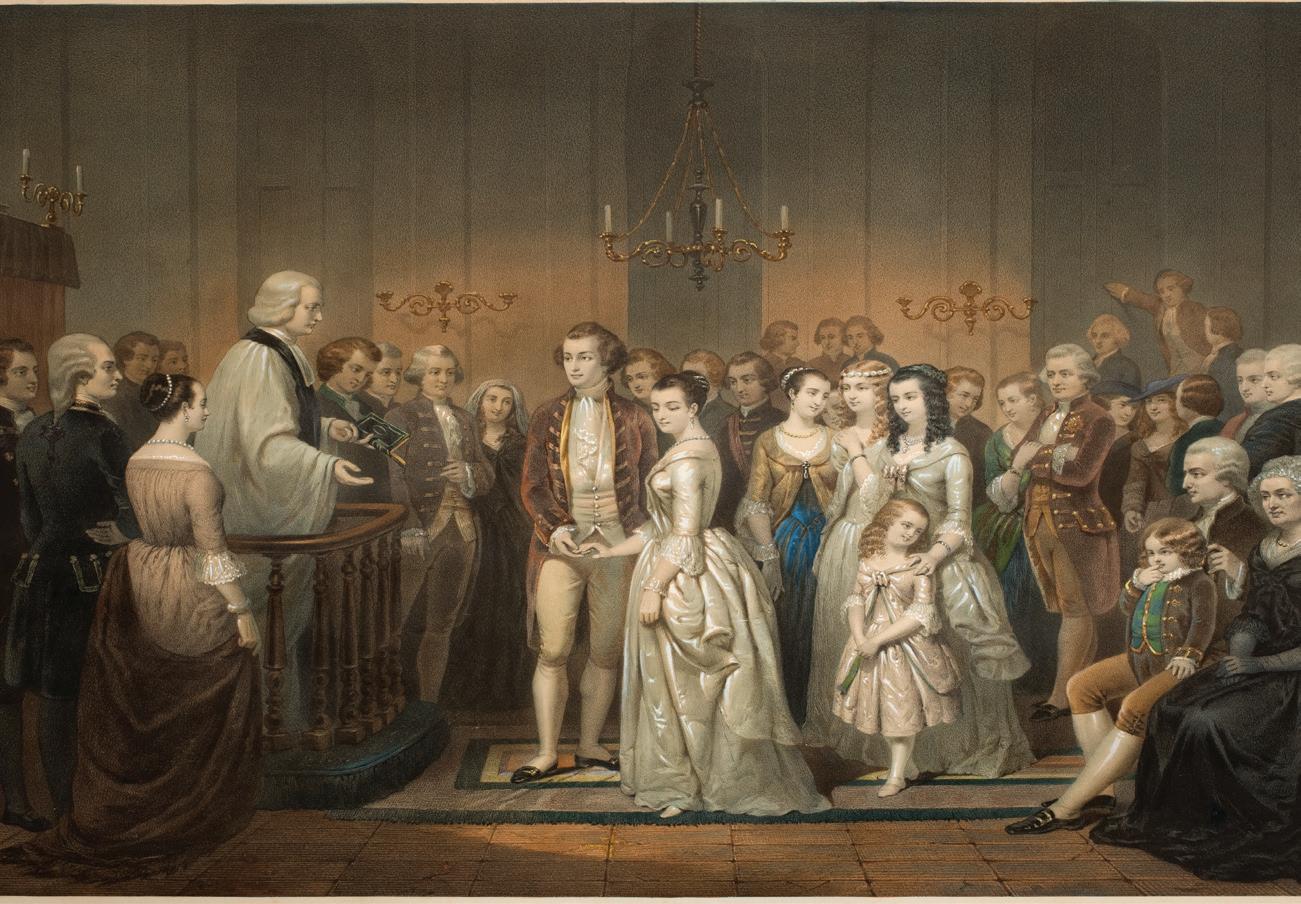
GEORGE WASHINGTON’S MOUNT VERNON 17 MARTHA WASHINGTON IN HER EARLY DAYS, AFTER ALONZO
1867, MVLA. FIRST HUSBAND: DANIEL PARKE CUSTIS, JOHN WOLLASTON,
WASHINGTON-CUSTIS-LEE COLLECTION, WASHINGTON & LEE UNIVERSITY. WEDDING: LIFE OF WASHINGTON, THE CITIZEN, CLAUDE REGNIER AFTER JUNIUS STEARNS, 1854, MVLA
CHAPPEL,
1757,
Scenes from a remarkable life: Martha as a young woman (opposite); a portrait of her first husband, Daniel Parke Custis (above left); and a 19th-century artist’s conjecture of her 1759 wedding to George Washington (above right).
As
managed the business of farming a much smaller property after the death of her husband, Augustine.
A Woman in Charge
The widow Martha notified several prominent London tobacco merchants that she would continue to ship the estate’s large crops for sale in England, and, as Virginia planters often did, she reminded the merchants that she expected a good price for what she insisted was extremely good tobacco. She also asked London merchants to represent her various legal interests in Great Britain and to pay the fees in a complicated case that had threatened the financial interests of the Custis family for years. The Custis estate was notable for its unusually large reserves of cash, and Martha followed her late husband’s practice of offering large interest-bearing loans to other planter families.
With her marriage to Washington, Martha lost the legal rights she had exercised as a widow but not her influence over decisions about land, money, and the lives of enslaved persons. Her knowledge of the Custis business and her familiarity with many of the enslaved individuals were invaluable to George after the courts recognized him as administrator of the estate and later as guardian of Martha’s young children, Jacky and Patsy Custis. George insisted that Martha accompany him to a meeting with a legal adviser so that she could answer questions about the Custis estate. George controlled Martha’s “dower rights” to one-third of the Custis property in land and
enslaved persons, and one of the early decisions by the couple determined the fate of the more than 80 enslaved individuals whom the executors designated as part of her share of the estate. The death of an enslaver always threatened to disrupt the lives of the enslaved, and Martha and George initially brought to Mount Vernon at least a dozen enslaved servants and artisans, severing their familiar ties with relatives and friends who remained on the Custis plantations, more than 100 miles to the south.
Many of the enslaved relocated from the Custis lands worked as domestic servants, such as Martha’s maid Sally. Others were selected for special responsibilities, suggesting Martha was familiar with their skills and experience on a much larger plantation. Jack, traveling without supervision, frequently carried letters for Washington or delivered supplies and livestock to plantations west of the mountains. Anthony, living with his wife, Betty, operated the gristmill at Mount Vernon and reported on the work of hired laborers. Morris, a carpenter from the Custis estate, became the first enslaved overseer at Mount Vernon and supervised other enslaved field workers at Dogue Run plantation for nearly 25 years.
Lady Boss
As the mistress of Mount Vernon, Martha managed the household, from the work in the kitchen to the preparation of the Mansion for the many guests the Washingtons received. She instructed enslaved women in sewing and supervised them in the making of cloth.

AS VIRGINIA PLANTERS OFTEN DID, MARTHA REMINDED THE MERCHANTS THAT SHE EXPECTED A GOOD PRICE FOR WHAT SHE INSISTED WAS EXTREMELY GOOD TOBACCO.
18 SPRING 2023 | MOUNT VERNON LADIES’ ASSOCIATION
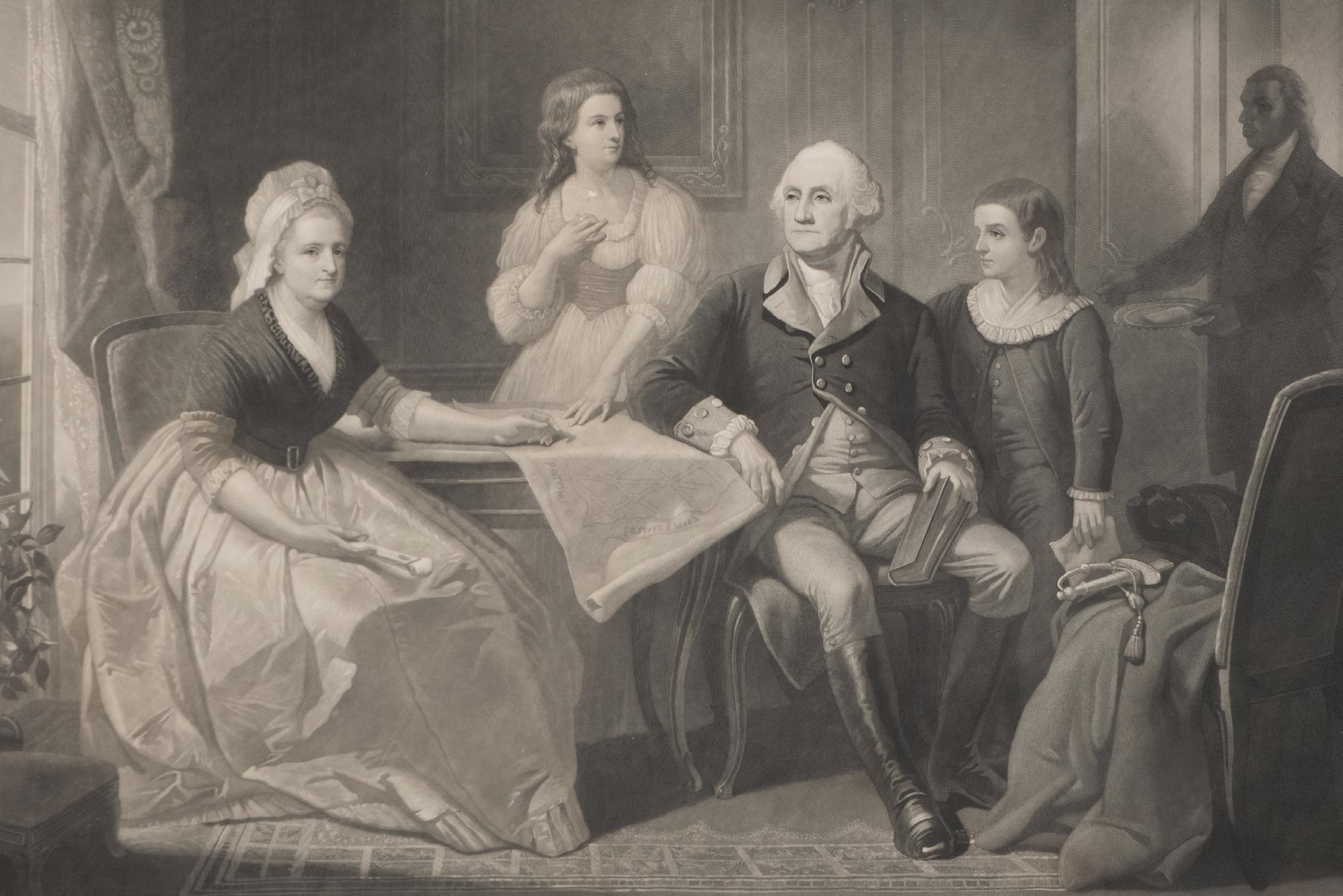
Martha also wrote shopkeepers in London to specify her orders of clothing and jewelry and chastised a milliner who charged exorbitant prices. The surviving copies of Martha’s letters to London are in George’s handwriting, reflecting their collaboration in preparing the annual orders for the fashionable goods and foodstuffs imported from Great Britain. And Martha kept a careful eye on commercial transactions. When then President Washington instructed a merchant to sell tobacco that had been left in a warehouse while he waited for improved prices, he acknowledged that sale of the crop “is a matter that rarely occurs to me except when I am reminded of it by Mrs Washington.”
In the early months of the Revolutionary War, after General Washington assumed command of the Continental Army, Martha refused advice to leave Mount Vernon, in spite of rumors that the British might attempt to capture her, and she organized the general’s papers and books for safekeeping. While she was in residence,
she controlled the financial accounts and provided the estate manager, Lund Washington (a distant cousin), with important business documents. Lund complained that Martha occasionally neglected correspondence, but he deferred to her management and relied on her for access to Washington’s office. During the war, Martha instructed Lund to make an annual cash payment to the enslaved overseer, Morris, as had been her husband’s practice.
From the new nation’s temporary capital of Philadelphia, where the president and first lady lived for nearly seven years, Martha tried to maintain her oversight of enslaved artisans who manufactured clothing for the laborers at Mount Vernon, but she increasingly criticized the work of the women she had supervised for years. She described Charlotte, an enslaved seamstress, as “indolent,” and accused her of feigning illness. After reviewing one of the weekly work reports delivered to Philadelphia, Martha informed her husband that Caroline Branham, an enslaved housemaid and seamstress, had produced
GEORGE WASHINGTON’S MOUNT VERNON 19 BILL OF EXCHANGE FROM ROBERT CAREY TO MARTHA CUSTIS, 1758 MAY 18, MVLA. WASHINGTON AND HIS FAMILY, ENGRAVED BY WILLIAM
SARTAIN, AFTER CHRISTIAN SCHUSSELE, 1864, MVLA
As a widow, Martha became the administrator of the Custis estate and had business dealings with London agents (opposite). She lost legal rights when she married Washington but continued to be a partner with great influence over decisions about land, money, and enslaved people (above).


barely half the usual number of shirts, and he sent word that he would force the seamstresses to labor in the fields if they did not increase their output. Within the president’s household, Martha experienced a more direct form of resistance when Ona Judge, her enslaved maid, escaped to New Hampshire. Hercules Posey, who had worked under Martha’s direction as the enslaved chef for the Washingtons in the capital, also escaped several months after he was sent back to Mount Vernon. The Washingtons made a considerable effort to recapture Judge and Posey, but both remained free.
Change in Status
With the death of Washington in December 1799, the widowed Martha was again responsible for the business of an entire estate, which he left for her benefit during the remainder of her life. For nearly two and a half years, Martha managed the plantation and other properties. She collected rents on her house in Alexandria and from tenants on her lands west of the Blue Ridge Mountains. She was responsible for managing the labor of nearly 320 enslaved people at Mount Vernon, and she purchased corn and cloth to supplement the provisions distributed to the laborers and their families. She also purchased items produced by the enslaved, such as poultry from David Gray, the enslaved overseer who had supervised work at several Mount Vernon farms for more than 30 years. Martha frequently called doctors to attend to the enslaved, on one occasion offering partial payment in potatoes and herring. After a season of great illness, she wrote to a friend, “All my family whites, and Blacks, have been very sick, some of them very ill — thank God they have all recovered again.”
Washington in his will provided for the emancipation of all of the enslaved people he owned, but he delayed their freedom until after the death of Martha. He had owned more than 120 enslaved persons, but an even larger number of those enslaved at Mount Vernon were the property of the Custis estate, to be inherited by Martha’s four grandchildren after her death. Washington thought the delay in emancipation would spare Martha from witnessing the painful break-up of the many families in which one parent was owned by Washington and the other by the Custis estate.
Within a few weeks of Washington’s death, however,
20 SPRING 2023 | MOUNT VERNON LADIES’ ASSOCIATION PORTRAIT: MRS. WASHINGTON, ENGRAVED BY JOHN NORMAN AFTER BENJAMIN BLYTHE, 1782, MVLA. MAP: GENERAL WASHINGTON'S FARM, BY GEORGE WASHINGTON AND ARTHUR YOUNG, 1801, MVLA. GRANDCHILDREN, LEFT TO RIGHT: ELIZA PARKE CUSTIS LAW, SARAH MIRIAM PEALE, AFTER GILBERT STUART, 1836, MVLA; MARTHA PARKE CUSTIS, ROBERT EDGE PINE, 1785, MVLA; ELEANOR PARKE CUSTIS LEWIS, ARTIST UNKNOWN, AFTER JOHN BEALE BORDLEY, PROBABLY 20TH CENTURY, MVLA; GEORGE WASHINGTON PARKE CUSTIS, PENCIL SKETCH, 1862, MVLA
The extensive Mount Vernon plantation consisted of five farms (below). Upon Washington's death, Martha (above) was again responsible for the business of an entire estate, which she managed for more than two years until her death.
EVEN AS A WIDOW RESPONSIBLE FOR THE MANAGEMENT OF MOUNT VERNON, MARTHA HAD NO AUTHORITY TO SELL OR BEQUEATH THE LAND HER HUSBAND LEFT TO FAMILY MEMBERS, NOR COULD SHE FREE OR SELL THE ENSLAVED PEOPLE WHO WOULD BE DIVIDED AMONG HER CUSTIS GRANDCHILDREN.
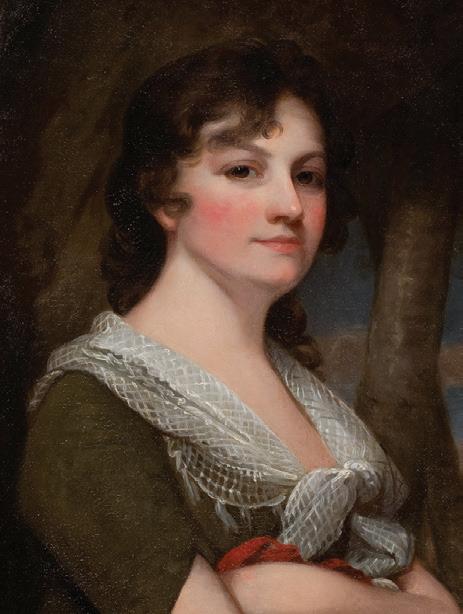


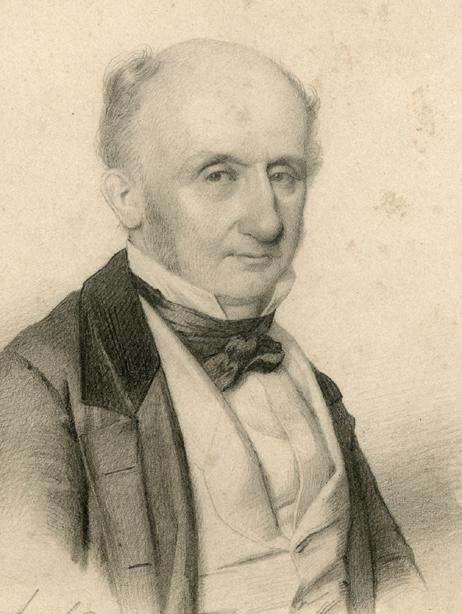
his nephew, Bushrod Washington, advised Martha to be rid of the enslaved people under her control and to withdraw from the management of a plantation, which he thought too great a financial burden. The following summer, the estate manager submitted to Martha a sobering account of the costs of maintaining the household at the Mansion House, which could not be met by the revenue produced from the farms. In late 1800, following a visit to Mount Vernon, Abigail Adams reported that Martha had decided to free the enslaved people who had been owned by Washington. Martha admitted she was financially pressed to provision and care for all of the enslaved people at Mount Vernon, and she also confided to Adams that she did not believe her life was safe in the hands of so many people who would be freed at her death. Whatever the motivation, Martha signed a deed of manumission, which, as of January 1, 1801, freed all of the enslaved who had been owned by Washington. Within two months, all but a few of the freed persons had left Mount Vernon, separated from their family members who remained under Martha’s control.
Legal Restrictions
Even as a widow responsible for the management of Mount Vernon, Martha Washington had no authority
to sell or bequeath the land her husband left to family members, nor could she free or sell the more than 150 enslaved people who would be divided among her Custis grandchildren. In her final distribution of the limited property she controlled, Martha sought to promote the financial well-being of her family. She left her house in Alexandria to a nephew and provided that Elish, an enslaved servant she purchased after the death of Washington, be left to her grandson. She requested that most of her household goods be sold after her death to support the education of her Dandridge nephews, and she left gifts of cash to a few friends and her local church. For each of her Custis grandchildren, who were enormously wealthy, Martha designated cherished pieces of furniture, silver, or paintings. These would be reminders of the Washingtons’ life at Mount Vernon and the great estate that Martha had done so much to support.
Bruce A. Ragsdale is the winner of the 2022 George Washington Prize for his book Washington at the Plow: The Founding Farmer and the Question of Slavery. He served as director of the Federal Judicial History Office at the Federal Judicial Center and has been a fellow at the Washington Library at Mount Vernon.
21 GEORGE WASHINGTON’S MOUNT VERNON
Martha's four surviving grandchildren: Elizabeth ("Eliza"), Martha ("Patty"), Eleanor ("Nelly"), and George ("Wash").

Post Script
How The Papers of Martha Washington came to be
By kathryn gehred
Following her husband’s death,
Martha Washington moved out of the bedroom they had shared and into a “small inconvenient uncomfortable apartment” on the third floor of Mount Vernon, and no “entreaty” could “induce her to change.” In the spring of 1802, after two years of “grieving incessantly,” Martha Dandridge Custis Washington lay in that sparsely furnished room, very sick, tended by family friend and doctor, James Craik. “During her last illness,” according to her granddaughter, she ordered that all the letters between her and her husband be “destroyed.”
Many assume that since she destroyed her correspondence with George, none of her writings remain. But Martha wrote letters to other people, and many of these do indeed survive. In fact, there are around 380 letters to and from Martha Washington still in existence. During her lifetime, Washington wrote to her nieces and nephews, her children, her grandchildren, and some of the most influential women of the era, including Abigail Adams and Mercy Otis Warren. Her surviving correspondence provide a fascinating portrait of Martha Washington as her own person, beyond simply the wife of George.

23 PORTRAIT: MARTHA WASHINGTON, REMBRANDT PEALE, C. 1850, METROPOLITAN MUSEUM OF ART. DESK: LADY'S WRITING TABLE, MADE BY VICTOR-JEAN-GABRIEL CHAVIGNEAU, 1787–1789, MVLA FIRST LADY
Martha Washington, writer (opposite), and the desk on which she often wrote (above).
GEORGE WASHINGTON’S MOUNT VERNON
You can find these letters and more in The Papers of Martha Washington, a new volume from the Mount Vernon Ladies’ Association, the Washington Family Papers Project, and the University of Virginia Press. The volume is a transcribed collection of Martha Washington’s papers, including correspondence, financial documents, lists of enslaved persons, and so on. It also includes tools to help place the letters in context, such as editorial essays, family trees, and timelines. The Papers of Martha Washington is meant to be both a valuable tool for historians and an interesting read for anyone curious about Lady Washington.
The Papers of Martha Washington was proposed by the editors of The Papers of George Washington, an editorial project at the University of Virginia that has been publishing George Washington’s voluminous correspondence since 1968. The editors had been using an earlier edition of Martha’s papers, but found some issues with that volume. Some letters were printed out of order, for example, and there were typos and misspellings in the annotations. The Washington Papers editors decided to release a new edition, treating Martha’s papers with the same amount of care and attention they gave George’s. In
conjunction with Mount Vernon, and with funding from generous donors, the Washington Family Papers project became a reality in 2015.
One of the first exciting finds of the project was a note from Martha to George, hastily scribbled on the back of a letter from Martha’s son John Parke Custis. It is short—an addendum to something she had written in an earlier letter: “My love the silver cup I mentioned to you in my letter by the last post—Wt 113 ouz.” With so few examples of the correspondence between Martha and George, this note, in her handwriting, offers a glimpse into a casual, domestic moment in the couple’s marriage.
The Papers of Martha Washington includes 80 letters that have not appeared in any previous collections of her writings. Among these are several letters from Mercy Otis Warren, a prominent figure in Boston, as well as a poet and historian of the Revolutionary War. Warren describes Washington as “a lady whose character I esteem, and whose person I love.” And in a never before published letter to her niece, Martha mentions the arrival of Citizen Genet, the French minister who repeatedly disrespected George’s authority and drove a wedge between the president and members of his Cabinet. MARCH
"Your most Affectionate…"
The six - line greeting to George, added at the end of a letter from his distant cousin Lund Washington, provides a glimpse into the couple’s warm relationship. Martha speaks of the “rainney and wett” weather and notes she had recently written to him and, “As I have nothing new to tell you, I must conclude my self your most Affectionate.”
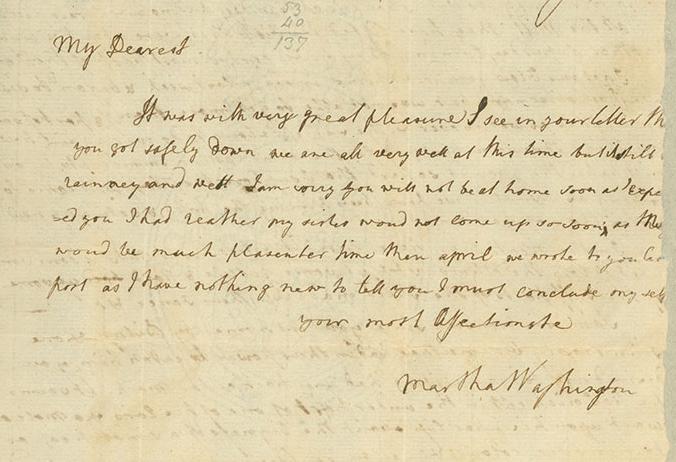
24 WINTER 2022 | MOUNT VERNON LADIES’ ASSOCIATION POSTSCRIPT FROM LETTER, LUND WASHINGTON TO GEORGE WASHINGTON, MVLA
1767
30,
Martha’s candid writing style is one of the most interesting things about this volume. Unlike George, who was frequently writing for political reasons and therefore often maintained a professional tone, most of Martha’s surviving correspondence is to her family and friends and is subsequently in a much less formal style. She writes freely and has no problem speaking her mind. Writing from Cambridge in 1775, Martha provides a memorable description of a war zone, “I confess I shuder every time I hear the sound of a gun,” yet in the same letter teases her friend about a possible suitor: “[T]he girls may rest sattisfied on Mr Harrisons account for he seems two fond of his Country to give his heart to any but one of his Virginia Friends, thare are but two Young Laides in Cambrige, and a very great number of Gentlemen so you may gess how much is made of them—but neither of them is pritty I think.” Martha’s papers often mix personal stories alongside historic events in a way that makes them fascinating to read.
With most of the correspondence between George and Martha destroyed, some may wrongly assume that little else Martha wrote is of value. The Papers of Martha Washington puts that idea to rest. Martha lived her life right at the center of one of the most consequential eras
in American history. Her words and experiences provide a fresh perspective of a well-studied time. The new volume will serve as a resource for historians, researchers, and others to examine the early United States from a new angle. It is perhaps time to treat Martha Washington in the same way she bashfully reported the people of Philadelphia did as she traveled to her husband’s winter encampment: “as if I had been a very great some body."
Kathryn Gehred is a research editor with the Papers of George Washington documentary editing project at the University of Virginia. She worked on George Washington’s Barbados Diary, 1751–52, and was a lead editor on The Papers of Martha Washington. She is currently editing a digital collection of the papers of Bushrod Washington.

THE 736-PAGE HARDCOVER BOOK IS AVAILABLE FOR PURCHASE ON YOUR NEXT VISIT TO MOUNT VERNON, OR ONLINE BY VISITING SHOPS.MOUNTVERNON.ORG.
MARCH
"I hear so very seldom from you…"
In this letter to John Parke Custis and Eleanor Calvert Custis Stewart (misdated as 1778), Martha chides her children for not writing. She reports that she and the General are in good health, that Col. Harrison has not arrived in camp and is reported to be in Philadelphia, and that she has bought a new doll for Beth.
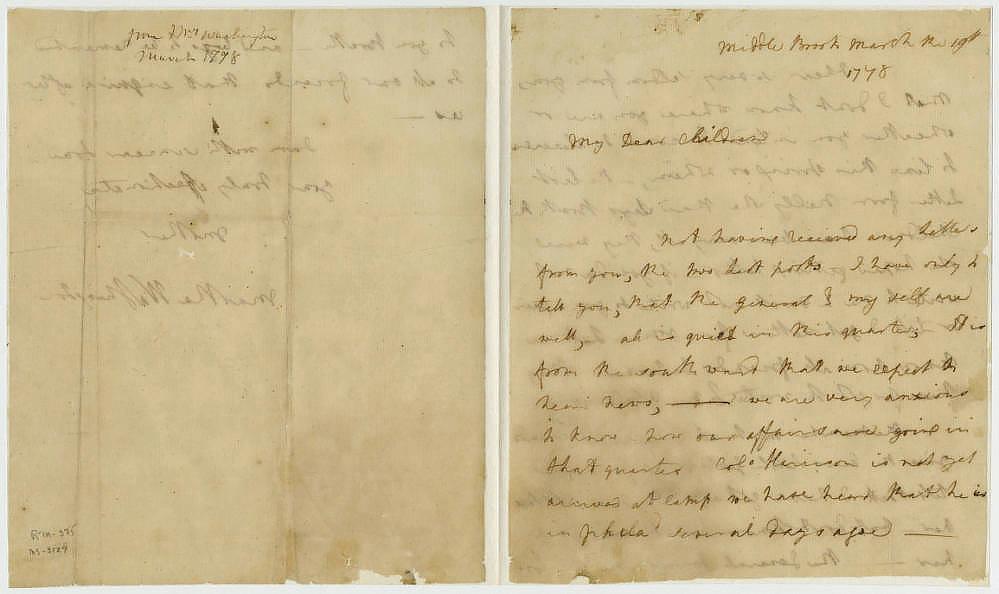
GEORGE WASHINGTON’S MOUNT VERNON 25
MARTHA
LETTER,
WASHINGTON TO "MY DEAR CHILDREN," MVLA
19, 1779
Martha,Uncensored
8 fascinating facts about the first lady, gleaned from her papers
By kathryn gehred
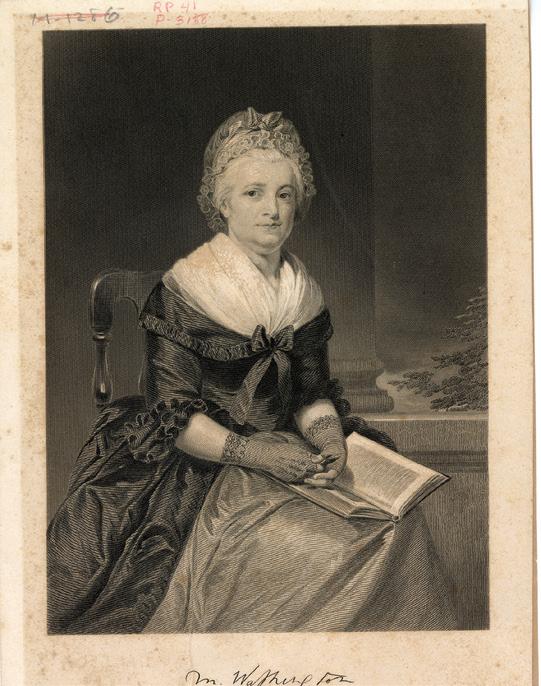
1 She was an avid reader. Any look at George and Martha Washington’s financial records shows that Martha ordered many books for her own use, ranging from novels (The Fair Jilt: The Amours of Prince Tarquin and Miranda) to travelogues (The Beauties of Hervey). She was more well read than one might expect for the time.
2
She was at Valley Forge. In fact, Martha accompanied George for extended periods at every winter encampment during the Revolutionary War, managing the household at his headquarters, helping with his correspondence, and entertaining guests. She described Valley Forge like this: “The General is in Camped in what
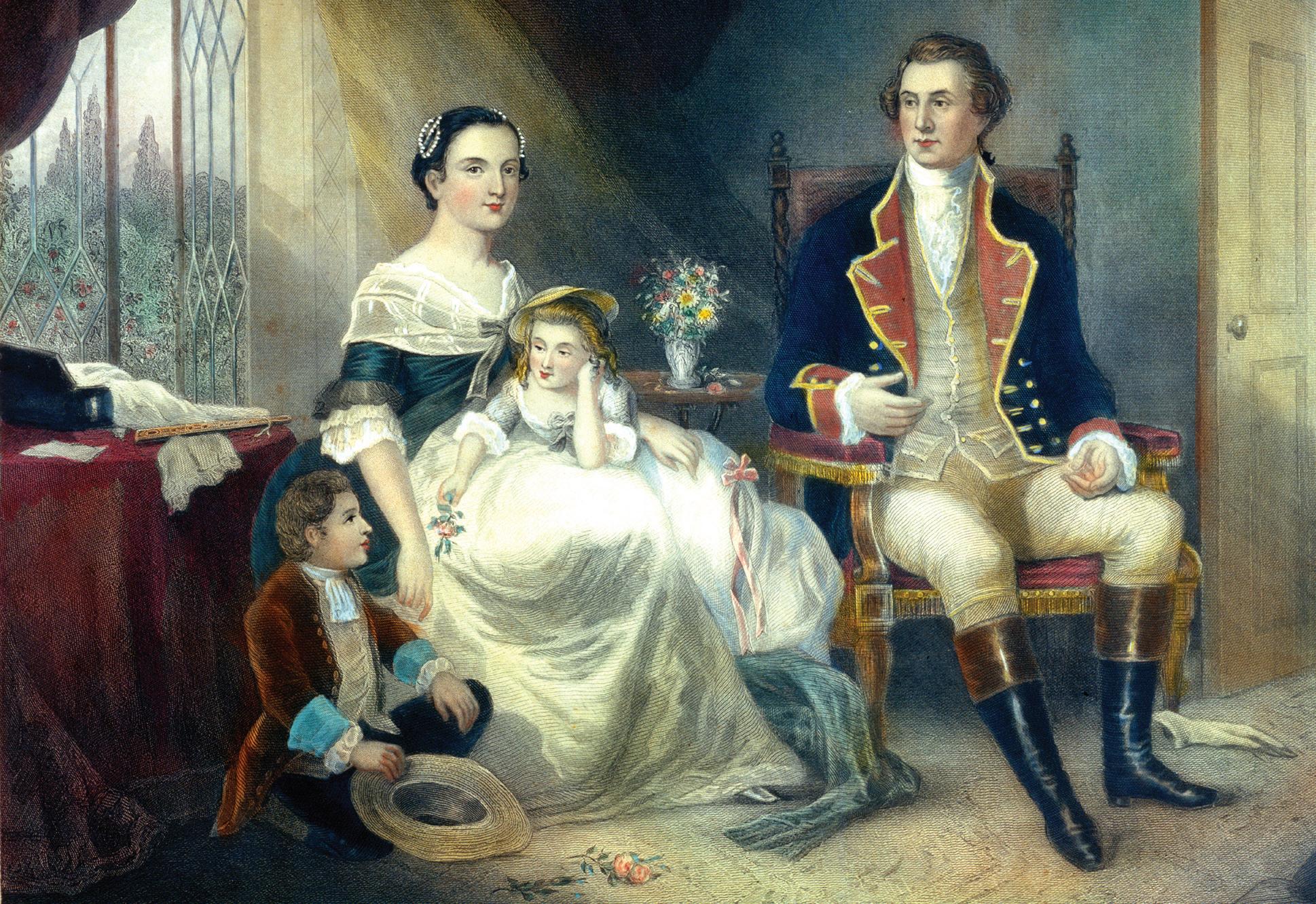
26
Unlike other women of her time, Martha was a reader (top left), and a widow with children when she wed George (above).
WITH BOOK: MARTHA WASHINGTON, PUBLISHED BY JOHNSON, FRY & CO., AFTER CHAPPEL, MID-19TH CENTURY, MVLA. WITH CHILDREN: COURTSHIP OF WASHINGTON, ENGRAVING BY JOHN C. MCRAE, 1860, MVLA
is called the great valley on the Banks of the Schuykill officers and men are cheifly in Hutts, which they say is tolarable comfortable; the army are as healthy as can well be expected in general—the Generals appartment is very small he has had a log cabben built to dine in which has made our quarter much more tolarable than they were at first.”
3 She was older than George. In an era when it was very common for men to marry much younger women, Martha was nearly a year older than her husband. So, when she affectionately called him “My Old Man,” she was making a joke.
4 She sought the return of her enslaved former maid. Three years after Ona Judge Staines’s escape to freedom, the Washingtons asked Martha’s nephew, Burwell Basset, Jr., to travel to New Hampshire to bring her back to Mount Vernon.
5 Her sense of humor surprised John Adams. In a 1796 letter to Abigail Adams, the vice president wrote that “Mrs Washington told me a story on Tuesday, before a Number of Gentlemen so ineffably ridiculous that I dare not repeat it in Writing. The venerable Lady laughed as immoderately as all the rest of Us did.”

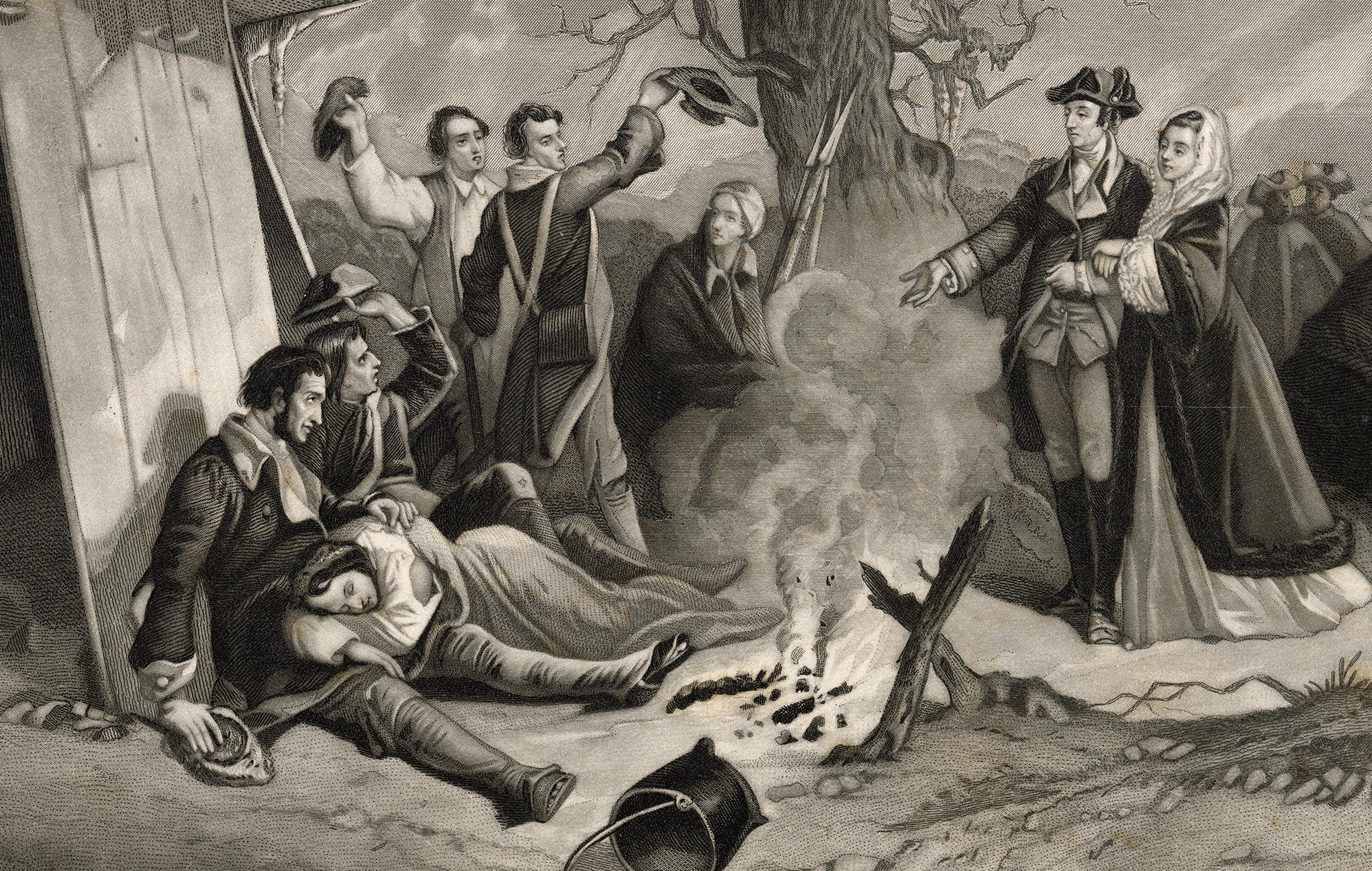
6 She was in Philadelphia on July 4, 1776. George was not. The Fourth of July is such a celebrated moment in American history that people assume George Washington must have been there for the passage of the Declaration of Independence. In fact, he was in New York, battling the British fleet at Sandy Hook. Martha, however, had left New York on June 30 and
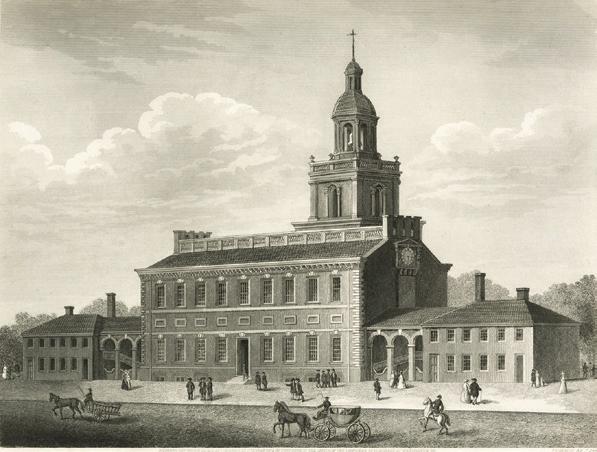
arrived in Philadelphia (above) shortly afterward. She remained in that city until late August, socializing with the likes of John Hancock, during this pivotal historical moment in the nation’s founding.
7 She was the target of scams. One man wrote to Martha shortly after George’s death, saying that he had had a prophetic dream about her, in which she had delivered a child who had then been kidnapped. He then asked for her help in getting out of prison.
8 She became convinced that the enslaved people of Mount Vernon were going to murder her. When George Washington died, his will stipulated that, after the death of his wife, those he had legally enslaved were to be freed. This represented about half of the enslaved persons at Mount Vernon, the rest being part of Martha’s dower estate. Recognizing that her life was the only thing standing between about 100 people and their freedom, Martha became fearful. Abigail Adams wrote, “[S]he did not feel as tho her Life was safe in their Hands, many of whom would be told that it was in there interest to get rid of her.” She freed George Washington’s enslaved persons early, on January 1, 1801, more than a year before her death. [Read more, page 20.]
27 PORTRAIT: JOHN ADAMS, AFTER GILBERT STUART, C. 1815, NATIONAL PORTRAIT GALLERY, SMITHSONIAN INSTITUTION. BUILDING: THE STATE HOUSE IN PHILADELPHIA, JOHN SERZ, 1878, NEW YORK PUBLIC LIBRARY. CAMPFIRE: ENCAMPMENT AT VALLEY FORGE, WALTER, AFTER SCHUSSELE, 19TH CENTURY, MVLA
John Adams, Washington’s vice president, commented on Martha's immoderate sense of humor.
GEORGE WASHINGTON’S MOUNT VERNON
Martha, here with George at Valley Forge, accompanied the General for extended periods at every winter encampment during the Revolutionary War.
Needlework was a creative passion for Martha Dandridge Custis Washington throughout her life, and Mount Vernon holds an extraordinary collection of her work.
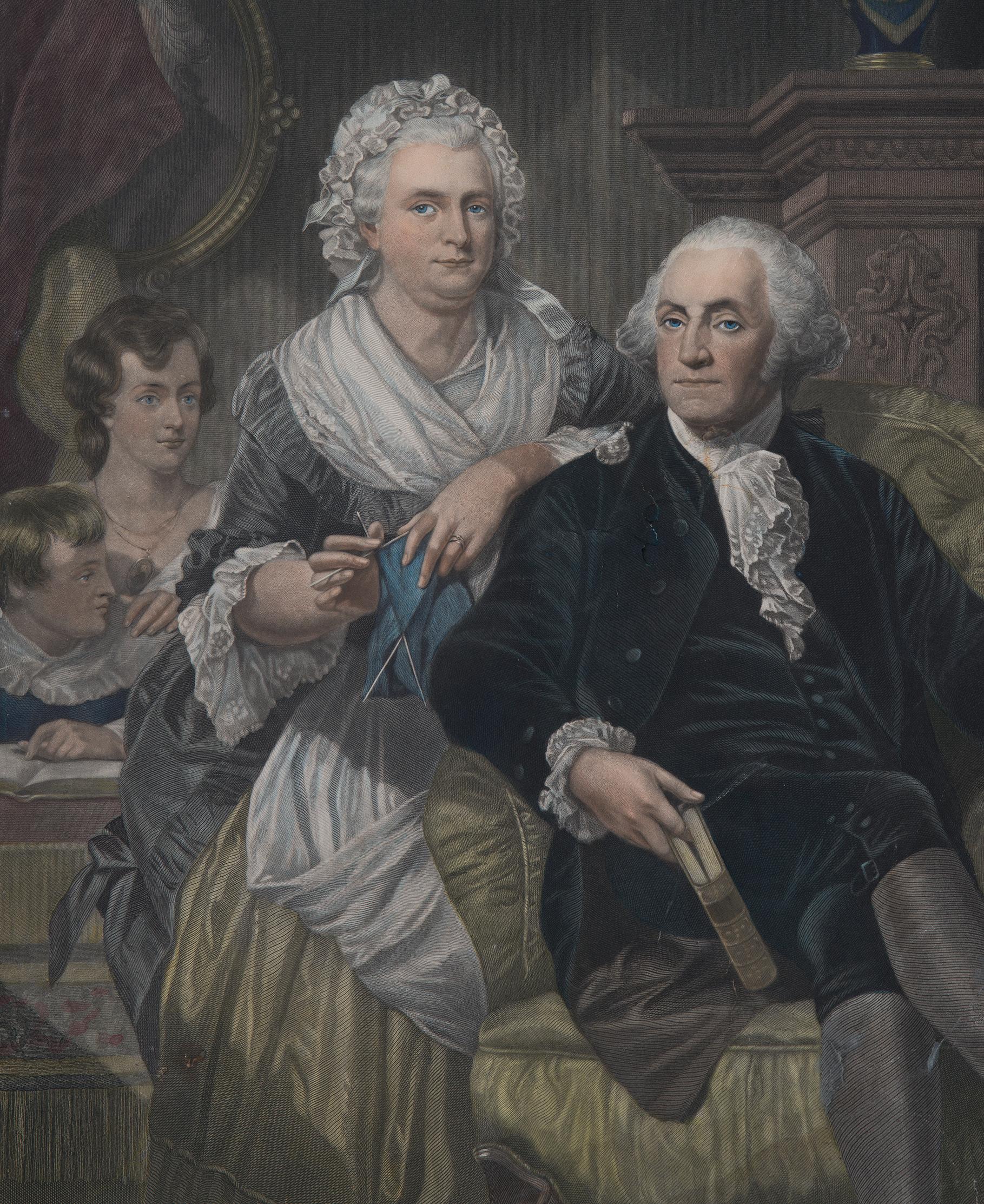
Artist
at eart
28 SPRING 2023 | MOUNT VERNON LADIES’ ASSOCIATION
FIRST LADY
The narrative thread of Mrs. Washington’s life is visible in her needlework
By amanda isaac

Whitework Embroidery
LATE 1700 s
Re-creating a section of a bed valance possibly worked by Martha Washington, this reproduction demonstrates the crisp aesthetic of the original and the multitude of stitches required. The grapevine design was intended to be viewed horizontally, with the grapes hanging downward.
CHROMOLITHOGRAPH: WASHINGTON FAMILY IN NEW ROOM H.B. HALLS SONS, 1867, MVLA. EMBROIDERY: MVLA 29 GEORGE WASHINGTON’S MOUNT VERNON
Mount Vernon
holds an extraordinary collection of more than 17 needleworks by Martha Dandridge Custis Washington, one of the largest and most varied groups of needlework by an American woman of the 18th century. The pieces range from a delicately knitted fingerless mitt for a child to boldly colored quilts measuring more than eight feet square. Mrs. Washington’s work offers an important marker of the types and quality of needlework done in Virginia, compared to other regions. It can also be said to have inaugurated a tradition of first ladies who took to their needle as a private respite or in service to a cause. More specifically, the surviving needlework is central to understanding Martha Washington as an individual, offering a view that would be missing if historians relied solely on documentation. Even in her own day, her needlework was extraordinary. She excelled at the needle arts, going beyond the requisite productions of
Stitching
VIRGINIA SAMPL ER, 1742
a young girl’s education to explore a range of techniques and forms, not only for practical reasons but also clearly for the pleasure of it. For Martha, creating art with needle and thread offered one constant amid a life of dramatic social and political change.
Early Endeavors
As a young girl in an early 18th–century gentry family, Martha likely learned both plain sewing and ornamental work, probably first from her mother, Frances Orlando Jones Dandridge, or perhaps


SPRING 2023 | MOUNT VERNON LADIES’ ASSOCIATION 30
Martha’s early handiwork doesn’t survive, though as a child she may have worked on a sampler such as this one.

Netting
HAIR NET, c . 1783
One example of Martha's needlework during the Revolutionary War is this hair net, used by men when sleeping.
an aunt or other female relation. Most, if not all, of her education would have taken place at her home, Chestnut Grove. She would have started with a simple sampler of stitched alphabets and verses and then progressed to more advanced projects such as embroidered pictures, furniture covers, and clothing. Along the way, she probably also had a hand in teaching her four younger sisters.
Women’s education at the time prioritized proficiency with the needle above writing and mathematics, with the expectation that women would be in charge of the production and procurement of textiles for their households. Elite young women were further encouraged to go beyond plain sewing to more specialized types of needlecrafts, or “fancy work,” that required more costly materials, from finely woven linen and silk cloth to silk threads and gold and silver trims. According to the prevailing thought of the time, a woman skilled with her needle could adorn her person and household, prove herself to be industrious and virtuous, and thus bring honor to herself, her husband, and her family.
While women of all classes might ply their needle, the practice of completing more ornamental works became a marker of status. The more decorative the work, the more costly the materials and the more time was required. Martha’s needlework was possible because enslaved and hired laborers shouldered
GEORGE WASHINGTON’S MOUNT VERNON 31 SAMPLER: MARY JOHNSON, 1742, COLONIAL WILLIAMSBURG. HAIR NET: ON LOAN FROM THE COLFAX FAMILY, DESCENDANTS OF CAPTAIN WILLIAM COLFAX, TO WHOM MARTHA WASHINGTON GIFTED THE NIGHTCAP, MVLA

Knitting
FINGERLESS MITT, c . 1798–1802
the endless tasks of running a plantation—cultivating crops, cooking, laundering, cleaning house, caring for children, making clothes, and everything else that fell within a woman’s domain. In her role as a mistress of a plantation, Martha would have overseen the production and purchase of clothing and furnishings for the household. Her choice to pursue ornamental works as well, rather than abandon them amid the responsibilities of adulthood, signaled a distinctive passion for the needle arts.
The first documentary reference to Martha Dandridge’s needlework appears in a 1751 order for goods from England. The year before, Martha had wed one of the wealthiest planters in the colony, Daniel Parke Custis, and took on the responsibility that came with this position. She directly oversaw the enslaved workers who ran the Custis city and country houses, as well as the enslaved spinners and sewers and hired weavers producing textiles for use on the Custis plantations. At the time of the order, the 20-year-old may have been expecting her first child. Despite these competing demands, she embarked on another endeavor, ordering soft wool threads for embroidery, then known as “crewels”: “1/2 lb of Cruel of white, Grey, and Blew Colors,” along with “one piece of very fine white Callico.” In the mid-18th century, surface embroidery depicting large-scale florals in shades of blue was a popular choice for objects such as women’s pockets, petticoats, chair seat covers, and bed hangings.
Ambitious Undertaking
In 1765, Martha began work on a set of 12 canvaswork chair cushions. By then, 34-year-old Martha Custis, now Washington, had borne four children, lost two children and her first husband, and was six years into a new life at another plantation. Most of the cushions survive today, and eight are in the Mount Vernon collection. They attest to her skill, but equally important, to her determination. From English upholsterer Philip Bell, she ordered canvas, seven shades of wool thread, and one shade of yellow silk, detailing the amounts needed by weight. The order makes it clear she had already worked out the pattern—a repeating scallop shell and leaf design—and the amount of thread required for it.
Stitched chair seats of the day typically featured geometric or floral designs or literary scenes. Martha’s
SPRING 2023 | MOUNT VERNON LADIES’ ASSOCIATION 32
Knit by Martha for her great-granddaughter, this cotton mitt is sized to a child's hand and employs a lacy chevron pattern.
choice was a nod to the period’s fascination with shells, associated with whimsy and fantasy, or more specifically, with Venus, the goddess of love. The colors she chose (yellow, orange, and red) suggest she intended to place the seats in the parlor or best bedchamber at Mount Vernon.
Little did she know how long it would take to complete the project. The experience of recent stitchers confirms the enormity of the task. [See sidebar, page 35.] Each cushion has more than 90,000 individual stitches; altogether, the set required more than a million. If worked consistently for a few hours each day, she might have been able to complete a cushion in three to four months; at that rate, completing a dozen would have required a minimum of three years. The years following that order brought their share of distractions and challenges, including the death of her daughter, Patsy; the American Revolution; raising grandchildren; and becoming first lady.
In July 1794, while in Philadelphia, Mrs. Washington wrote to her niece, Fanny, then acting as housekeeper at Mount Vernon: “I beg you will get the key of my closet ... and send me the two bags that has my worked chear Bottoms in, as I intend to have them made into some thing if they are not spoiled and Eaten up with the moth.” In a second letter, she reiterated, “I intend to set about my chear and get them done.” Despite her intentions, there were delays. According to her granddaughter, Nelly, Martha finished the last cushion “in the 70th year of her age.” It took more than 35 years, but she finished the entire set of 12 canvases and had them made into loose cushions for Windsor arm chairs. Before her death, she divided the set among her three granddaughters, passing them on as a tangible reminder of her persistence and love.
War Effort
Across the eight years of the Revolutionary War, Martha joined General Washington at each of the Continental Army’s winter encampments, typically lasting five to six months of the year. While there, she joined with other officers’ wives to knit stockings and caps for the troops. By 1780, she had joined with “The Ladies Association of Philadelphia” to fundraise and purchase shirts for soldiers.
Mrs. Washington also did netting, a process of knotting threads together, and used this technique to create hair nets that were worn by gentlemen when sleeping. Correspondence documents her gift of two

Canvaswork
SEAT CUSHION, c . 1765–1800
Martha's longest and most comprehensive creative project was a set of 12 canvaswork seat cushions, which took her 35 years to complete.
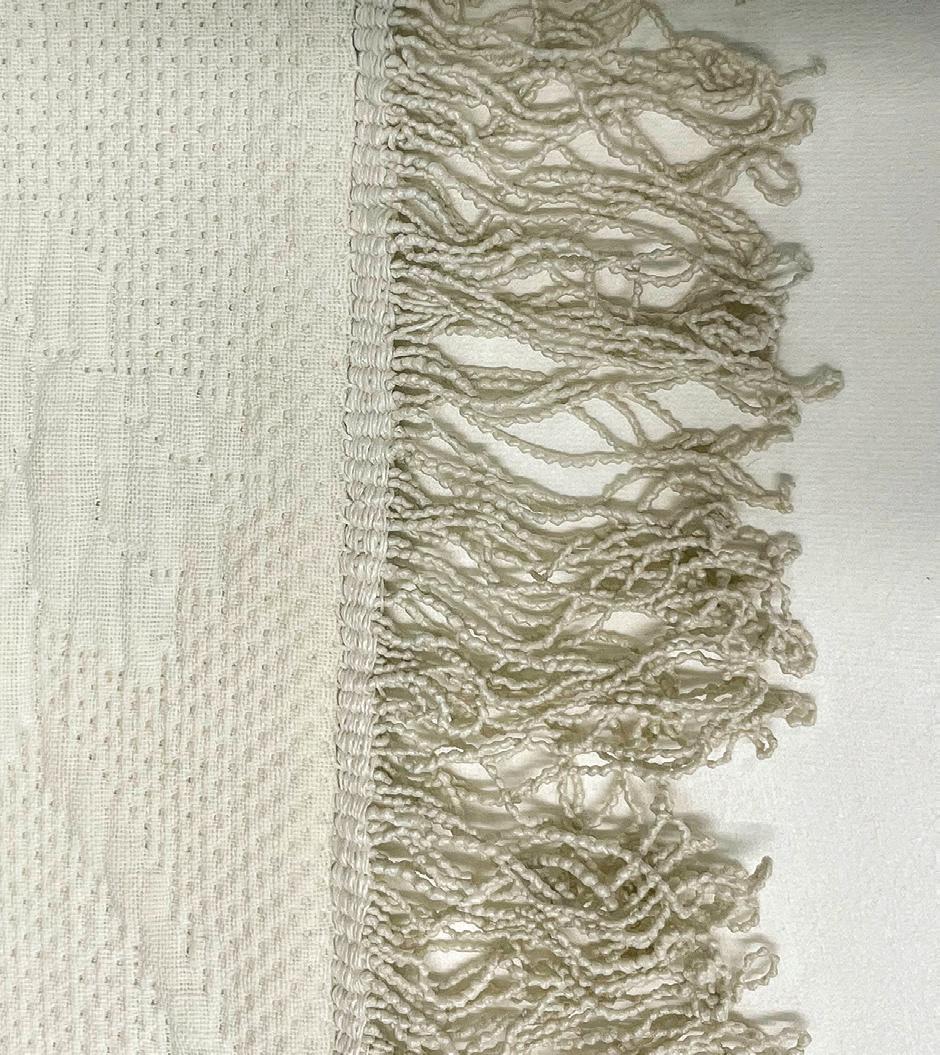
Knotting
BEDCOVER FRINGE, 1790 s
Martha adorned a purchased bedcover with a handmade fringe consisting of almost 700 yards of thread she knotted.
GEORGE WASHINGTON’S MOUNT VERNON 33
MITT, CUSHION, FRINGE: MVLA
hair nets to General Henry Knox, who replied, “[H]e is deeply impressed with the sense of her goodness … to which he begs her to accept of his sincere thanks.” Only one example of a hair net from the Revolutionary War period survives to showcase her work and the comfort it brought others, thanks to the descendants of the recipient, Captain William Colfax, commander of Washington’s elite personal guard.
Knitting, Knotting, Quilting
Used primarily for utilitarian articles, knitting was a constant throughout Martha’s life. One surviving example is a fingerless mitt for her great-granddaughter, sized to a tiny hand and made with fine cotton thread in a lacy chevron pattern. Also in the collection is a pair of garters she reportedly made for her husband, which he would have used to tie around his stockings to keep them in place.
A recently acquired bedcover expands our understanding of her versatility. The bedcover itself is a typical example of loom-woven spreads mass-produced in England, but its fringe is all Mrs. Washington’s handwork, made from almost 700 yards of thread that she knotted. Exhibiting the type of virtuous industry idealized in the period, Martha accented and elevated the look of purchased articles with her own hand.
Knotting, a precursor of tatting, was one of the simplest ways for a woman to keep her hands active, using minimal equipment and concentration. It only required a shuttle wound with thread and a bag to hold the finished string, and it quickly produced a decorative trim, often likened to a string of pearls, that could be used to decorate textiles such as bed hangings. The hand movements were considered elegant enough to perform in the most refined company, and elite and noble women, including Queen Charlotte of England, practiced it.
Three quilts (one completed quilt and two pieced tops), likely made when she was in her 60s and 70s, suggest that even as she found herself facing increased social pressures as a public figure, she never abandoned her creative pursuits. The bold patterns and the quilts’ large size—each more than eight feet square— resulted in a powerful expression of Mrs. Washington’s artistic vision, and provide a counterpoint to the popular image of her as a diminutive, self-effacing figure. [Read
Quilting
QUILT TOP, c. 1800
Likely made in her 60s and 70s when she was a public figure, Martha's quilts showcase her bold artistic vision.

more about her quilts in “A Stitch in Time,” in the Spring 2020 issue.]
Stitching Community
One of the most complex needleworks in the collection features a neoclassical design of a grapevine and bows, worked completely in white, on a white ground. Whitework embroidery is a demanding technique, requiring good light, keen eyesight, and constant attention to execute the complex array of stitches in the monochrome palette. The fragments add up to about 19 feet of embroidery, done on a 12-and-a-half-inch-wide strip of cotton. Tackholes indicate they once formed part of a continuous valance that would have wrapped around the top of a bed.
Several expert embroiderers recently re-created sections of the piece, a process that recaptured the clean aesthetic intended for the originals and gave insight to the original stitchers. More than a dozen different stitches were used throughout, with sometimes 10 or more techniques used within the space of a small leaf. The variety conveyed an energy and a delight in ornament for ornament’s sake. Analysis of each stitch further revealed that there were at least three different hands involved, including a right-
SPRING 2023 | MOUNT VERNON LADIES’ ASSOCIATION 34
handed expert, left-handed stitcher, and a novice or visually impaired person.
That there were multiple hands at work was in keeping with the practice of social stitching. Larger projects often fostered connection and intergenerational learning. For example, when Virginian Francis Hill recorded in her 1797 diary the process of working her counterpane, she listed the numerous friends and relatives who stitched on it each time they visited. We can surmise this whitework was directed and partially worked on by Mrs. Washington with the assistance of friends and family. She constantly had nieces, grandnieces, granddaughters, and cousins with her at Mount Vernon, and some of their time together would have been spent on needlework. Many would continue the needle arts they had learned from Mrs. Washington, carrying on skills handed down through the centuries from one woman to another.
An Artist at Heart
Martha Washington’s needlework reveals her artistic talent and the determination, adaptability, precision, and boldness that defined her character. She pursued it within a culture that admired handworks as virtuoso performances, artistic expressions, and visible representations of friendships and social connections.
Martha gave away some of her work as gifts. At the same time, she collected needlework tributes from grandchildren, friends, and admirers. She displayed these embroidered pictures and firescreens in the parlors at Mount Vernon, alongside oil portraits, engravings, and watercolors, as testimony to the spectrum of art and the community of artists she patronized, and in which she participated.
Amanda Isaac is Mount Vernon’s associate curator.
What modern stitchers learned re-creating Martha’s shell cushions Hands-On Lessons
One way to study an object is to reverse engineer it. In the case of Martha Washington’s 12 shell cushions, the need for a display set for the Mansion led to new perspectives on the nature of Martha’s feat. In 2010, Mount Vernon staff Laura Simo and Diana Cordray initiated the project, recruiting expert stitchers from the Embroiderers’ Guild of America and the American Needlepoint Guild. The group of 15 volunteers included Ann Scott, Vice Regent for Missouri, who completed the 11th cushion and is currently working on the 12th.
After close study of an original, Cordray used a digital program to design a pattern. The stitchers employed the type of cross-stitch chosen by Martha. In addition to documenting how the work was done, the effort confirmed the prodigious amount of time a project of this scale required. Stitching the repetitive pattern was also a test of endurance.
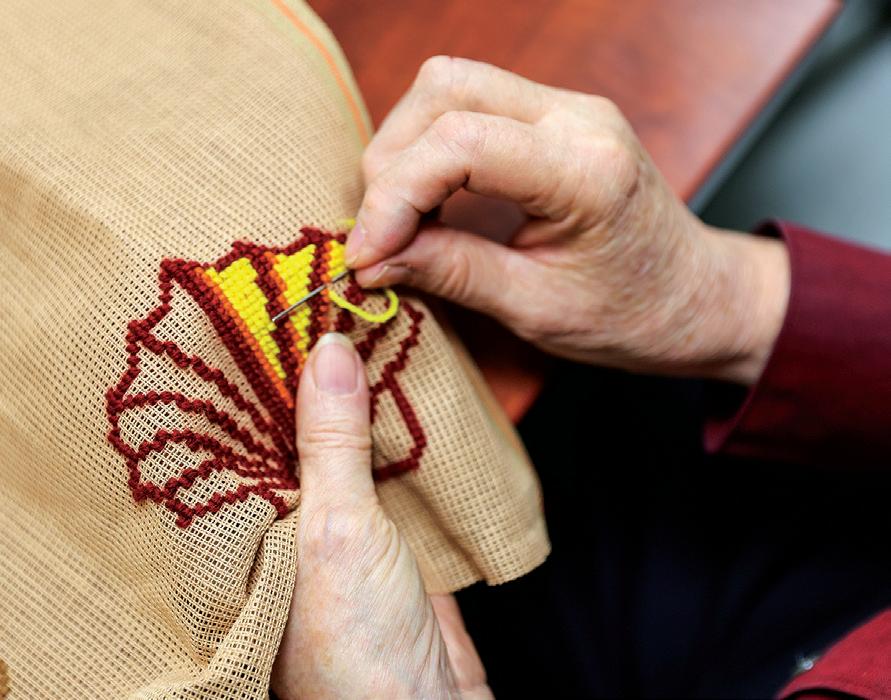
As stitcher Sheryl DeJong noted, “Considering the many interruptions in Martha’s life, she had to have been very dedicated to finishing the cushions.” The exercise has shed new light on Martha’s longestrunning project. Visitors can view the finished products in the little parlor at Mount Vernon.
GEORGE WASHINGTON’S MOUNT VERNON 35 MVLA
A new generation: Volunteer stitcher Sheryl DeJong at work.
Manipulated Images
Along with the times, the public’s perception of Martha has changed
by lynn price robbins
Throughout her lifetime and into the present day, Martha Washington was many things to many people. For the most part, she had no control over these portrayals: a celebrity, the model Virginia housewife, a spokesperson for a social movement, a symbol of womanhood that changed with each generation, and a tool for advertisers. Today, we are beginning to see her less as an allegorical instrument and more as a human being.
Martha Washington first became known outside her
small Virginia world early in the Revolutionary War. Newspapers labeled her “The Lady of his Excellency” and tracked her journey to all eight winter encampments of General Washington and the Continental Army. On her way to Cambridge, Massachusetts, in 1775, Martha was taken aback by the reception she received as she passed through Philadelphia. She wrote her friend Elizabeth Ramsay: “I dont dout but you have seen the Figuer our arrivel made in that Philadelphia paper—and I left it in as great pomp as if I had been a very great some body.” Martha’s celebrity only grew with the fledgling
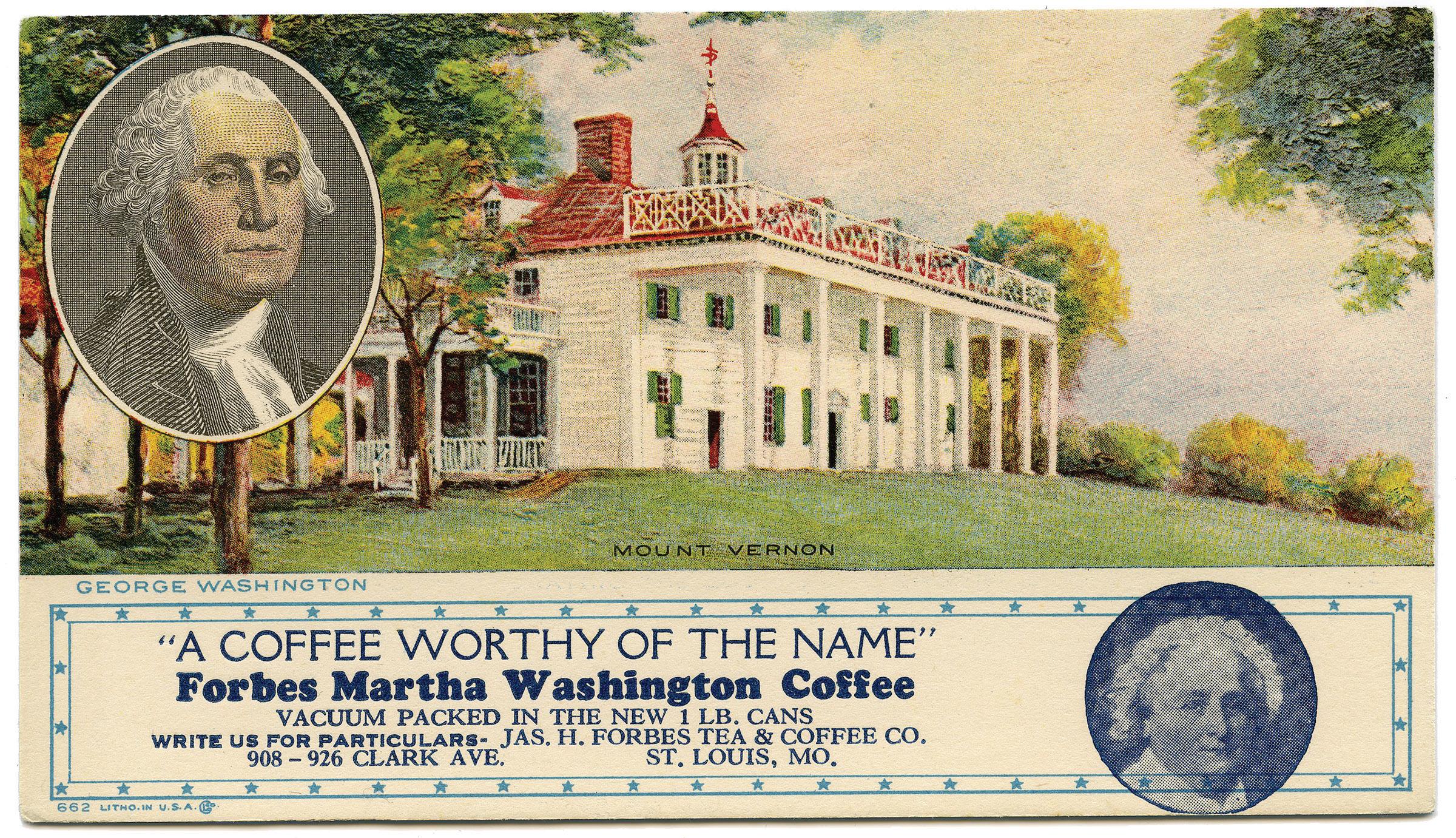
SPRING 2023 | MOUNT VERNON LADIES’ ASSOCIATION 36 Research at Mount Vernon
MISSOURI HISTORY MUSEUM/WIKIMEDIA COMMONS
Since Martha Washington's death, her image and name have been used as a marketing tool, as in this circa 1910 advertisement card for coffee.
FIRST LADY
nation as she continued to accompany and assist her husband, the first president, in his duties.
At the time of her death in 1802, the nation claimed her memory, and Martha was venerated as a woman and a patriot. Her grandson, George Washington Parke Custis, published his glowing recollections of Martha in 1859, highlighting her worthiness as a model of domesticity and femininity, admirable attributes for the era. He wrote, “Mrs. Washington, an accomplished Virginia housewife of the olden time, gave her constant attention to all matters of her domestic household, and by skill and superior management greatly contributed to the comfortable reception and entertainment of the crowds of guests always to be found in the hospitable Mansion of Mount Vernon.”
Martha’s memory continued to be exploited and manipulated for decades. The early 19th century saw her become the namesake for the Martha Washingtonian temperance movement—the female auxiliary of the Washingtonian societies—which identified “the appropriate work of woman to perform” for the cause. Early in the establishment of these societies, Martha Washingtonians helped reform “inebriates” by offering assistance: sewing, mending clothing, conducting home visits, and distributing items such as furniture and bedding. Notably, the actual Washingtons enjoyed their alcohol during their lifetimes. Martha herself purchased, served, and drank wine. While in Philadelphia in 1794, she wrote to her niece Fanny Bassett asking her not to give out wine to curiosity seekers visiting Mount Vernon, noting, “[I]f it is continued—we shall have but very little for our selves.” And George operated a very successful whiskey distillery.
At the turn of the 20th century, Martha’s presumed decorum was being equated with womanhood. The December 22, 1904, issue of the Wilkes-Barre Times declared Martha to be a “real” woman, presumably unlike women of the time. Following an expression of unpretentiousness from a governor’s wife, the author declared, “We have become accustomed to silly priggish talk from women whose husbands attain high public places that the genuinely American note struck in this simple, modest utterance is as refreshing as a noon-day shower. It carries us back to Abigail Adams,
Martha Washington, and the other real women who did as much as the men of their day to stamp out folly and frivolity and make this great, wholesome, unpretentious republic it became.”
As the debate over women’s suffrage swept the nation, Martha’s supposed propensity to quietly follow her husband’s lead manifested itself in this 1918 newspaper quote from an unidentified, likely male, author: “Martha Washington must have been a wonderful woman. We would all be George Washingtons if our wives didn’t ask us so many damn fool questions.” In fact, a perusal through even a small number of letters written by Martha Washington dispels any notion that she was a meek follower of anyone. [See story, page 22.]
The mid- to late 20th century saw Martha’s image become a potent advertising tool. The Martha Washington geranium had found popularity in the early 1900s, and Martha soon had an oven, a line of electrical appliances, a bejeweled watch, at least one college, hospitals, and various inns named after her. An ad in a 1956 issue of Montana’s Independent Record boasted, “Martha Washington loved gold braid and glitter … she went for General George! Maybe you’ll love these metallic evening blouses.” Co-opting Martha’s image for marketing purposes, companies claimed that Martha would have worn or used or approved of an item—whether or not it existed in her lifetime.
More recently, Americans, aided by historians, are beginning to examine the person behind the manipulated image. Biographies such as Patricia Brady’s Martha Washington: An American Life and Flora Frasier’s The Washingtons: George and Martha, “Join’d by Friendship, Crown’d by Love” place Martha solidly into the context of her life and times. The newly published Papers of Martha Washington allows Martha to be viewed on her own terms, through her own words, affording her some control, finally, over how she is remembered.
Lynn Price Robbins is the coeditor of George Washington’s Barbados Diary: 1751–52 and The Papers of Martha Washington. She holds a Ph.D. in history from George Mason University.
GEORGE WASHINGTON’S MOUNT VERNON 37
Essential Connections
Educator Jane Leinwand on teaching third graders in Havre, Montana
Amember of the Little Shell Chippewa tribe and lifelong Montanan, Jane Leinwand teaches third-grade social studies at Lincoln McKinley Primary in Havre, Montana, on the edge of the Rocky Boys (Chippewa, Cree) and Fort Belknap (Gros Ventre, Assiniboine) Reservations. She’s spent much of her 22 years as an educator working in schools that serve a disproportionately high percentage of families who are socioeconomically lower income.
Q: How do you contextualize George and Martha Washington when you are teaching a class in which many of the students are Indigenous? I can feel my
heart surge with pride when I see my students engage one another without regard to individual differences, and at other moments, I can feel my heart ache as I observe how aspects of their environment begin to influence a lessening of their natural tendencies to accept others based on meaningful qualities. I believe building one’s character takes courage and is rarely the easy option in my students’ lives. In our commitment to Montana’s Indian Education for All initiative, our district has built a philosophy of positive cultural immersion. We strive to play to the strengths of our unique surrounding cultures. Instead of hating or idolizing important historical figures, we admire the good accomplishments and actions, condemn the bad ones, and see people as they are: flawed, imperfect humans.

38 SPRING 2023 | MOUNT VERNON LADIES’ ASSOCIATION Washington in the Classroom
PHOTOS BY HOLLY PATTISON

Can you share any methods in teaching about Washington that you’ve found to be effective? I have had my students create a presidential timeline that can be displayed in the hallways of our school. Each display acts as both a tribute to our past presidents and a demonstration of what a student has learned. My students learn so much and are often fascinated by the personal lives of enslaved people. They also learn that George Washington, like 11 of the first 17 presidents, enslaved people. We talk about how that affected government policy and presidential decisions. Unlike other presidents, George Washington stipulated freedom for the enslaved people he legally owned in his 1799 will.
How do you make Revolutionary War history resonate with third graders? We read a lot of picture books aloud in my classroom. When choosing a picture book on the Revolutionary War, I like to make sure the information is accurate and that it covers varying perspectives within both the British and American sides of the conflict, among others. We are going to start reading Claudia Friddell’s George Washington’s Spies. To make it more meaningful for my students, I will point out on a map the locations of various tribes involved in the conflict.
How do you communicate George and Martha Washington’s impact on American history to third graders? We are currently reading Erica Armstrong Dunbar’s book Never Caught, the Story of Ona Judge: George and Martha Washington’s Courageous Slave Who Dared to Run Away as a teaching tool. This story has introduced my students to a kind of history they haven’t experienced before and raises important questions without being self-righteous. How is it that George Washington sought freedoms for himself, while enslaving others? Where did Ona Judge find the courage to run? Irony is one way to connect with third graders, and the authors allow them to find plenty of it in this story. This book has deep teaching moments embedded in Ona Judge’s powerful story.
YOUR SUPPORT OF MOUNT VERNON PROVIDES RESOURCES AND PROFESSIONAL DEVELOPMENT TO TEACHERS ACROSS THE COUNTRY.
VISIT MOUNTVERNON.ORG/DONATE.
GEORGE WASHINGTON’S MOUNT VERNON 39
Schoolteacher Jane Leinwand engages her third-grade social studies students at Lincoln McKinley Primary by reading aloud.
That’s the Spirit!
A record-breaking amount raised at the signature fall event

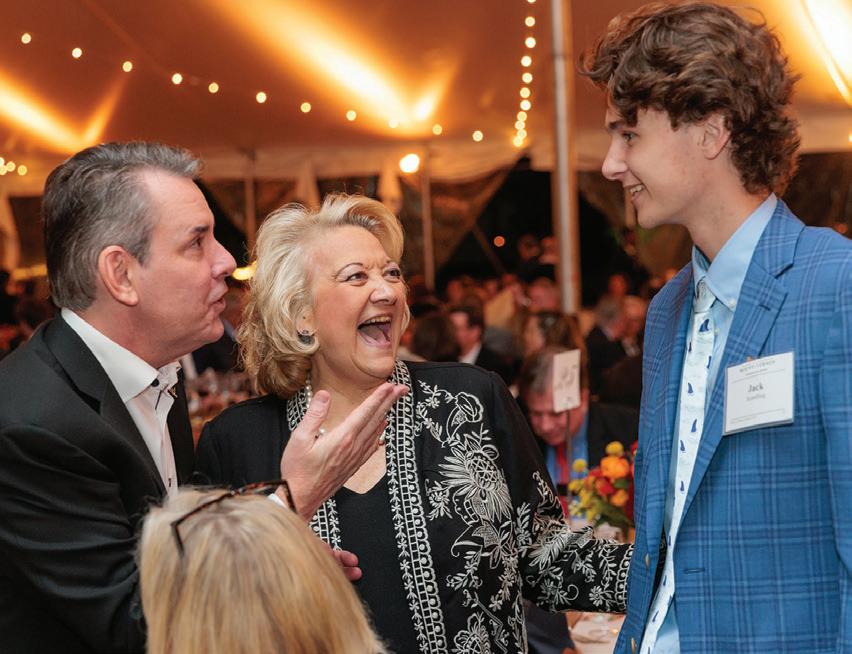

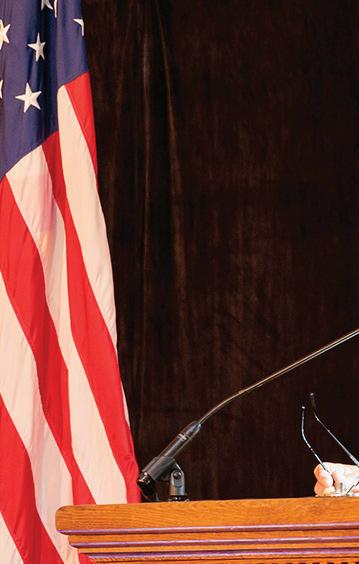
40 Shows of Support
SPRING 2023 | MOUNT VERNON LADIES’ ASSOCIATION



The 22nd Spirit of Mount Vernon, held October 6, 2022, on the estate, reached an important milestone. The signature event successfully raised more than $1 million—a record-breaking amount—for Mount Vernon’s mission of promoting education, historic preservation, and the legacy of George Washington. More than 850 guests from the government affairs community, Capitol Hill, and the Biden administration attended the event.
The evening included a sunset reception, a performance by the United States Marine Drum and Bugle Corps, fireworks, dinner, and a live auction that raised $123,000 during the event. Guests enjoyed a magnificent charcuterie display donated by the International Dairy Foods Association and Edwards Virginia Smokehouse, along with sweet treat boxes donated by the National Confectioners Association. The event also included the popular spirits-tasting bar donated and hosted by the Distilled Spirits Council of the United States. The popularity of this event continues to grow each year, making the evening one of the most sought-after tickets on the government affairs social calendar.
Among the special guest speakers were Suzanne Youngkin, Virginia’s first lady, and Carlos Del Toro, secretary of the U.S. Navy. Co-chairs included Ed Gillespie, senior executive vice president of external and legislative affairs at AT&T; Mike Johnson, president and CEO of the National Stone, Sand and Gravel Association; Scott Melville, president and CEO of the Consumer Healthcare Products Association; and Jeff Shockey, senior vice president of global government relations at Raytheon Technologies.
TO LEARN MORE THE SPIRIT OF MOUNT VERNON EVENT, VISIT MOUNTVERNON.ORG/SPIRIT.
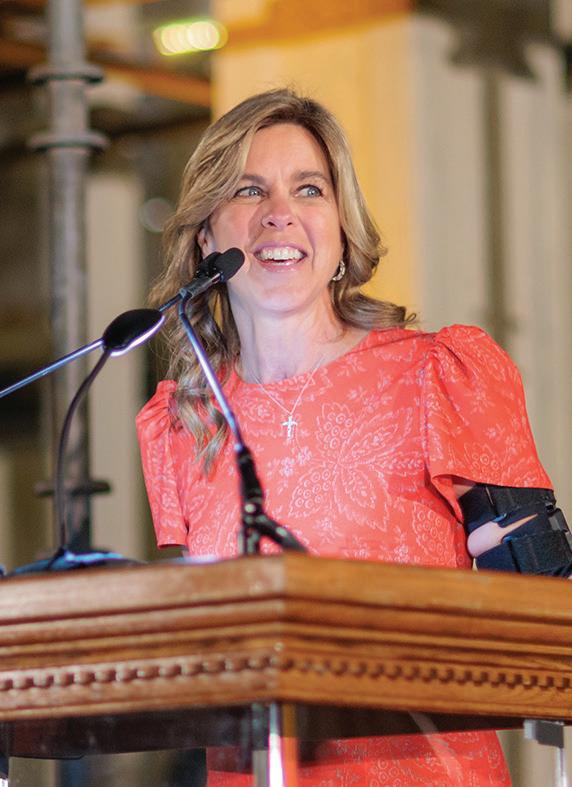
GEORGE WASHINGTON’S MOUNT VERNON 41
PHOTOS: MVLA
The evening’s highlights included (clockwise from left) the Marine Drum and Bugle Corps with fireworks; co-chair Mike Johnson with National Stone, Sand and Gravel Association staff; Suzanne Youngkin, first lady of Virginia; Carlos del Toro, secretary of the Navy; co-chair Ed Gillespie with the Honorable Mark Kennedy, Debbie Kennedy, and the Honorable Tom Davis; and Boeing’s Cheri Carter and Randy Sheppard.
Washington’s Tomb Restored
Campaign ensures protection of the first family’s final resting place

SPRING 2023 | MOUNT VERNON LADIES’ ASSOCIATION 42 Shows of Support
Restoring the Washingtons’ final resting place (above) involved extensive and painstaking work (right).
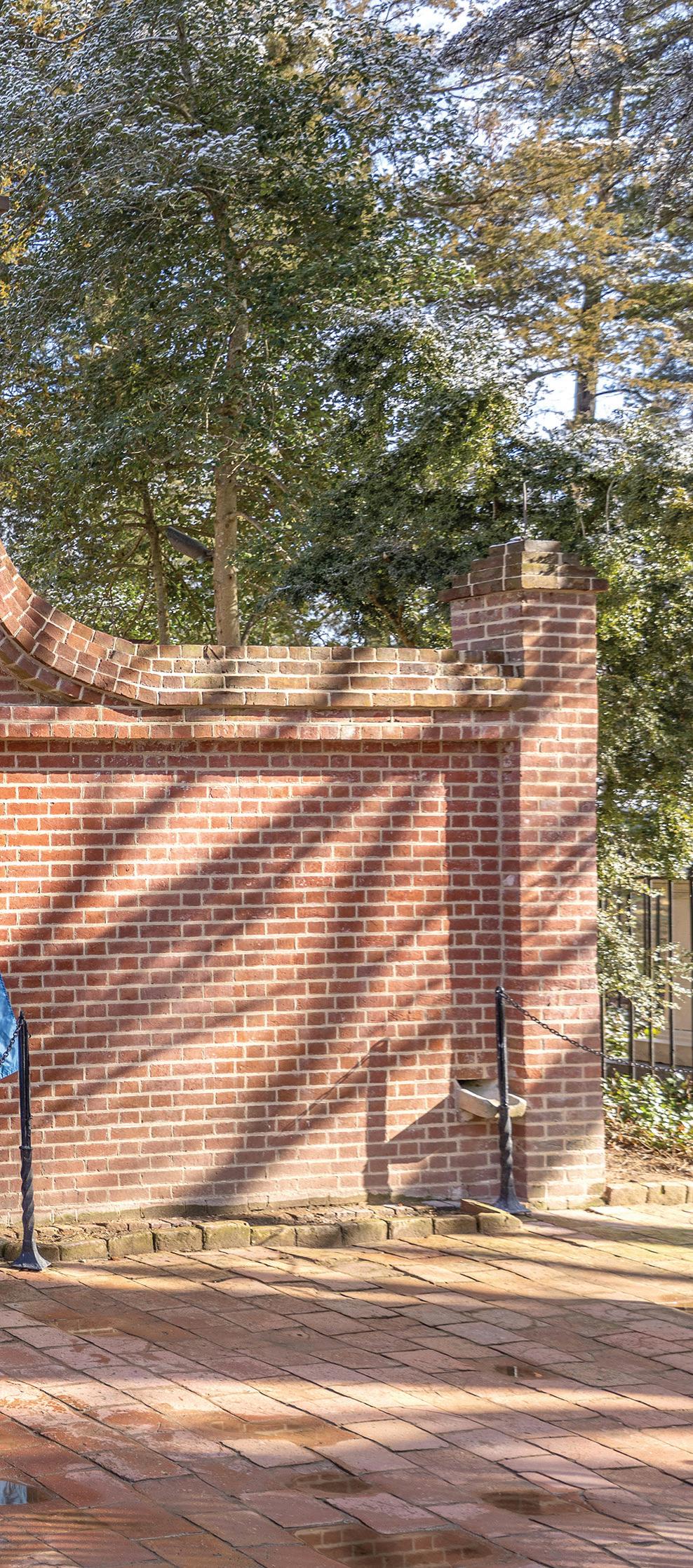
In George Washington’s 1799 will, he stipulated that a new tomb be built for the family. Because the family vault at Mount Vernon was deteriorating and not “properly situated,” he wanted a new one—of brick and on a larger scale—built adjacent to his fruit garden and nursery. It took until many years after his death, but in 1831, George, Martha, and other family members were moved to what is now called the New Tomb. The site has become a place of pilgrimage and remembrance for visitors the world over.
Over time, the New Tomb began to show its age. There was visible staining and crumbling of the brick and mortar, as well as damage to the plaster ceiling over the sarcophagi of the Washingtons. In July 2022, work began on a project to restore their final resting place. The brickwork was repointed, the metal roof inspected and sealed, and plasterwork redone. A new gate and vault doors were installed to complete the project in January. The work will control and reduce moisture infiltration and preserve this important landmark for future generations of visitors.
Devoted supporters of Mount Vernon, Wayne and Grace Rickert, of Bradenton, Florida, stepped forward with a major leadership gift toward this project. Additional support came from the Society of the Cincinnati in the State of Virginia, individuals, foundations, and Masonic lodges across the United States.
The project is part of Strengthening Our Foundations: The Campaign for Mount Vernon , a comprehensive effort to fund important preservation, education, and endowment projects to ensure Mount Vernon lasts for years to come. The campaign has raised more than $130 million, and progress continues toward a goal of at least $150 million.
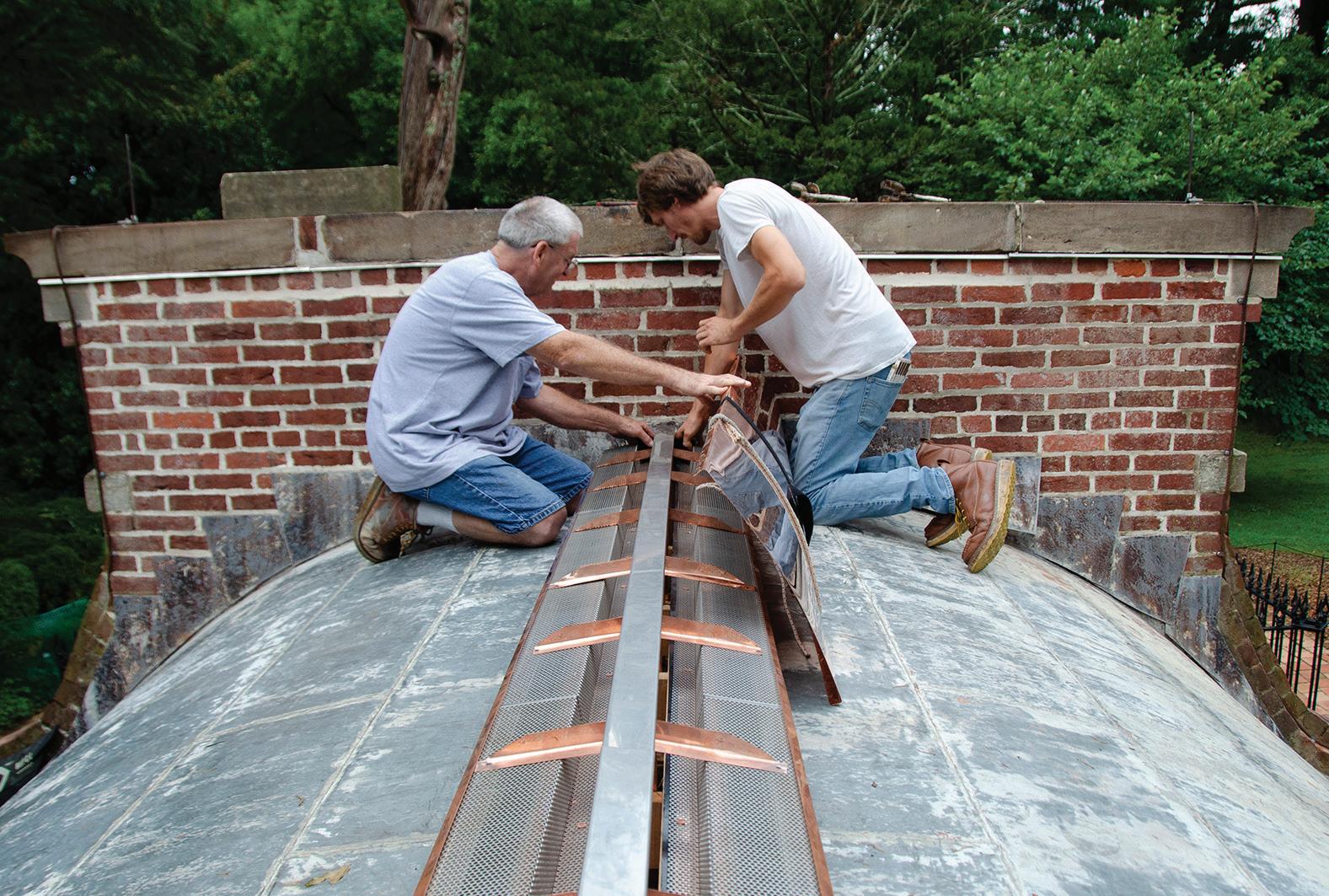
43 GEORGE WASHINGTON’S MOUNT VERNON
PHOTOS: MVLA
FIRST LADY
Martha’s Great Cake
Fruity, spicy, buttery, and boozy, it’s one of the few surviving recipes directly associated with Mrs. Washington
A common dessert in the colonial era, a Great Cake was a large, celebratory pastry consisting of fruit and spices, similar to the Italian delicacy panettone. Martha’s recipe, however, yielded a denser texture, more like what we would think of as a fruitcake. One transcription of the recipe included a peck of flour, three-quarters of a pound of sugar, three pounds of melted butter, and seven pounds of currants. Added to these were four grated nutmegs, cloves, cinnamon, mace, caraway seeds, water, and salt. Other ingredients included yeast derived from barm (the foam that rises to the top of fermented liquor), and liquid derived from posset, a warm mixture of ale and cream.
Though Martha Washington was adept at entertaining, she did not cook herself. Instead, enslaved people worked in the kitchens and would have prepared and presented the elaborate pastry as part of a grand Christmas dinner or Twelfth Night party. It might also have been served at tea.

44 Featured Photo
SPRING 2023 | MOUNT VERNON LADIES’ ASSOCIATION
TO BAKE A MODERN VERSION OF MARTHA’S GREAT CAKE, VISIT MOUNTVERNON.ORG/GREATCAKE.
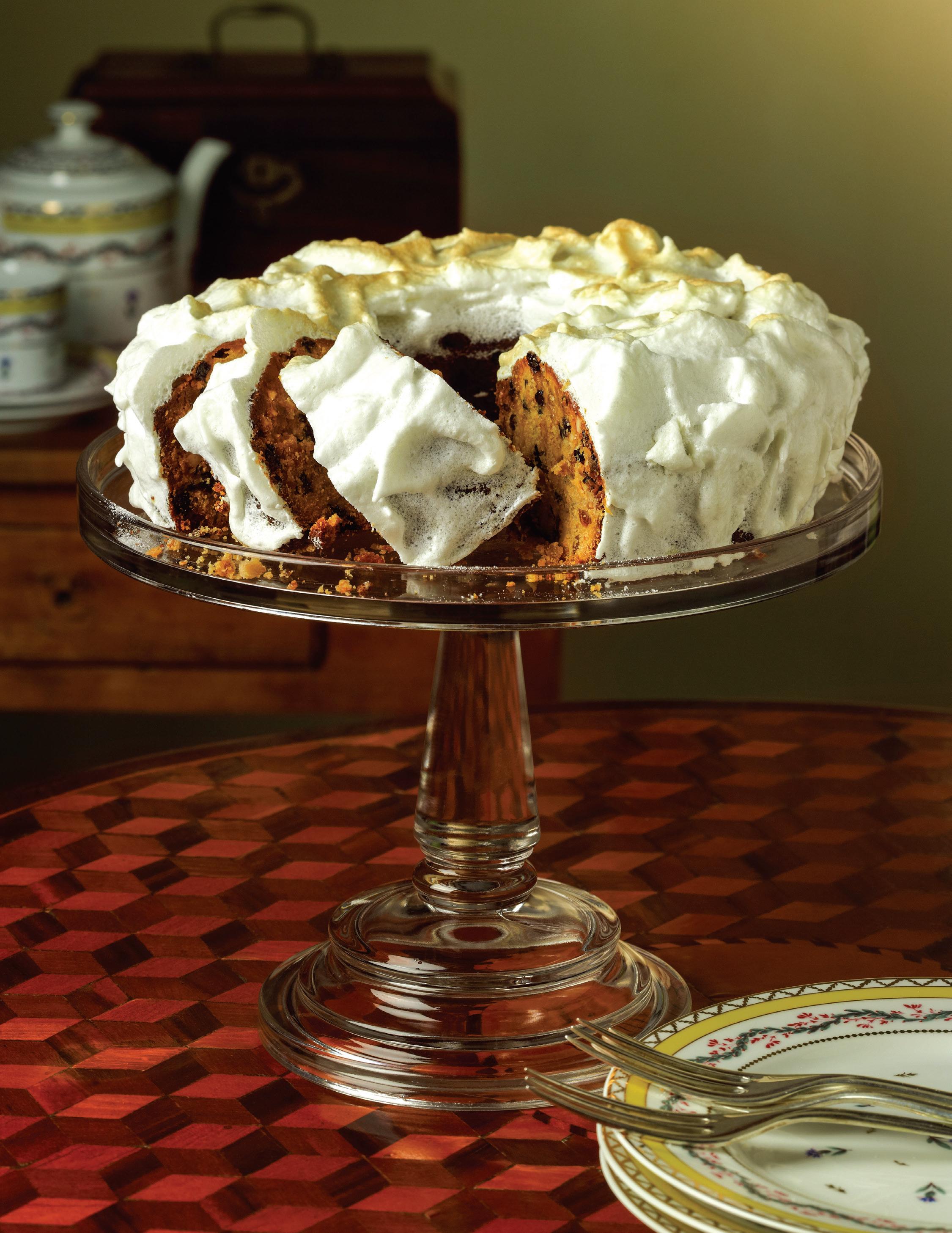
RECIPE AND CAKE: MVLA










 Douglas Bradburn President and CEO
Douglas Bradburn President and CEO






































































